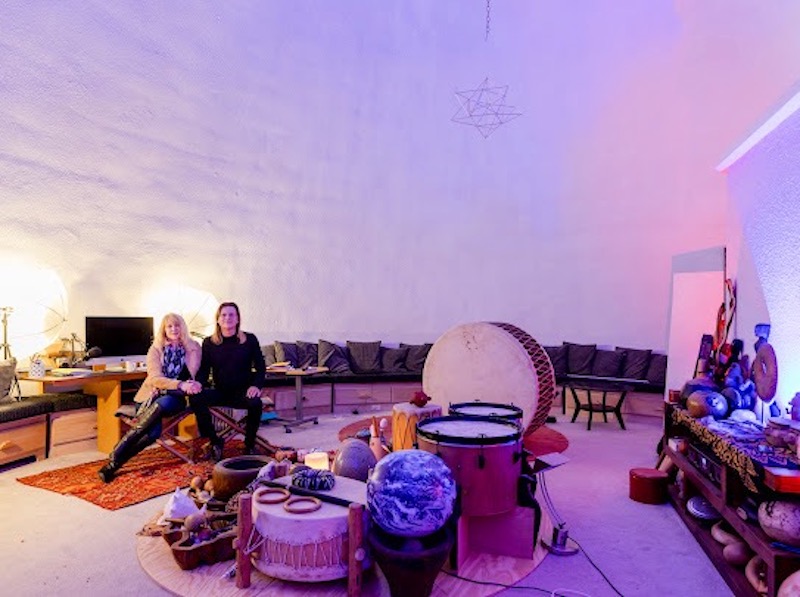 Join the conversation as we talk with the leading edge in the arts and sciences and go exploring — its a big universe out there! Every guest helps us fill in a piece of the Grand Puzzle of Life, with every conversation those eternal questions — who are we, where did we come from, where are we going — come into sharper focus. We make the most of our Information Age, when we can peer further and deeper, from the microcosm to the macrocosm, to better understand and celebrate our world and our place in it — and make a difference.And as an educational institution, we recognize to thrive, we must keep growing and broaden the scope of our work to the latest discoveries and theories in neuroscience, anthropology, archeology, archaeoastronomy, eco-spirituality, ecology, philosophy, psychology, mythology, shamanism, ritual, the heroes journey, the roots of theatre, deep history, art history — the full range of the arts and sciences — That’s why we call it Conversation for Exploration. Here’s where the “aha moments” await, along with an international community of fellow explorers. Our Free Events are open to all. And you can catch up recent webcast discussions on our YouTube, Facebook and Podcasts — hope to see you there! Also … Stay in touch via our Newsletter!
Join the conversation as we talk with the leading edge in the arts and sciences and go exploring — its a big universe out there! Every guest helps us fill in a piece of the Grand Puzzle of Life, with every conversation those eternal questions — who are we, where did we come from, where are we going — come into sharper focus. We make the most of our Information Age, when we can peer further and deeper, from the microcosm to the macrocosm, to better understand and celebrate our world and our place in it — and make a difference.And as an educational institution, we recognize to thrive, we must keep growing and broaden the scope of our work to the latest discoveries and theories in neuroscience, anthropology, archeology, archaeoastronomy, eco-spirituality, ecology, philosophy, psychology, mythology, shamanism, ritual, the heroes journey, the roots of theatre, deep history, art history — the full range of the arts and sciences — That’s why we call it Conversation for Exploration. Here’s where the “aha moments” await, along with an international community of fellow explorers. Our Free Events are open to all. And you can catch up recent webcast discussions on our YouTube, Facebook and Podcasts — hope to see you there! Also … Stay in touch via our Newsletter!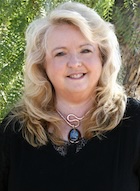 Sunday, November 24th: Healing Our Culture of Hidden Abuse
Sunday, November 24th: Healing Our Culture of Hidden Abuse![]()
Karen Tate. Author, Speaker, Researcher
ney.
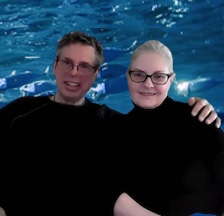 Sunday, November 17th: Solutionaries in Action: Inventing New Tech for Cleaner Oceans
Sunday, November 17th: Solutionaries in Action: Inventing New Tech for Cleaner Oceans![]()
Alan & Abby Ismond, Inventors & Environmental Engineers
What does it take to turn this dream into reality: overturning old, inefficient, toxic methods with new ideas and new technology that mimics Nature?
Alan and Abby Ismond will share the highs and lows of their personal journey to do just that. They are the husband-and-wife team at Aqua-Terra Consultants, environmental engineers for the fisheries industry. They developed new technology inspired by Alan’s flash of insight watching the wave action by which the ocean cleanses itself, and their focus for the last five years has been field-testing and perfecting an invention that may help revolutionize a wide range of industries needing to ecologically clean up the water they use.
While the fishing industry benefits by transforming waste into valuable by-products, increasing product recovery, and ensuring compliance with environmental regulations, the Ismonds’ larger goal is environmental stewardship—bringing visionary solutions to life that support the comprehensive big picture: working with, not against, Nature and our beautiful blue planet.
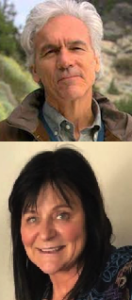 Sunday, November 10th: Exploring Earth’s Planetary Mind
Sunday, November 10th: Exploring Earth’s Planetary Mind![]()
Brian Swimme Ph.D & Monica DeRaspe-Bolles
One of humanity’s earliest questions about the nature of reality and our place in it is given fresh, dynamic hope and insight with cosmologist Brian Thomas Swimme and philosopher Monica DeRaspe-Bolles — and the answer lies with all of us. Our collective journey is a microcosm of the cosmos and its evolution and journey. Using cutting-edge science and real-world data, Brian and Monica lead the effort to usher in a new era, one of unification and a deepening sense of interconnectedness — with one another and with the cosmos at large.
They are the co-authors of the book and video series, ”The Story of the Noosphere”. Defined as the sum knowledge and experience of all that humanity has imagined, created, and built though the ages, the Noosphere can be seen as another layer to Earth’s many spheres, our collective planetary mind.
Join us as we try this on for size, test the implications, and weigh in, as we do with exciting new ideas! The hard questions are welcomed here, as we move beyond pure rationality, into the boundless power of imagination and reflection, and a hopeful vision for our future.
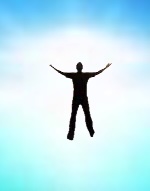 Sunday, October 27th: When the Veil Thins:
Sunday, October 27th: When the Veil Thins:![]()
Your Stories of Unexplained Encounters
Hosted by Paul & Laura Lee Robear
As the seasons shift and the veil between worlds grows thin this time of year, we’re diving deep into the realm of the unexplained. Have you ever had an eerie encounter, a brush with the supernatural, or witnessed something — or someone — that defies explanation? We invite you to share your story!
We have a few to share ourselves, and we want to hear from YOU. Be it a ghost, an otherworldly presence, alien or angel, these encounters prompt us to question reality. These lived experiences matter. Bring your voice and your stories to ponder the mysteries when the portals swing open, however briefly. Here is safe and open space to explore the unknown, together. Our next unexplained encounter can happen any moment….!
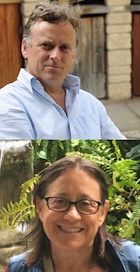 Sunday, October 20th: Decoding the Esoteric Teachings,
Sunday, October 20th: Decoding the Esoteric Teachings, ![]()
Rituals & Symbolism of Ancient Mystery Schools
David Elkington, Janet Rudolph
A mystery school is an ancient institution where initiates were taught secret spiritual knowledge and practices, often centered around the mysteries of life, death, and the cosmos. These schools offered esoteric teachings, rituals, and symbolic initiations that were meant to guide participants through a deeper understanding of the universe and human existence.
One of the most famous examples is the Eleusinian Mysteries in ancient Greece, centered around the myth of Persephone’s descent to the underworld and her eventual return, which symbolized death and rebirth. Participants in these rituals, who were sworn to secrecy, experienced profound spiritual awakenings and transformations, often tied to their conceptions of the afterlife. Similarly, the Egyptian mystery schools taught initiates sacred knowledge through the myths of deities like Isis and Osiris, focusing on cycles of death and rebirth, much like the Greek Eleusinian tradition. These teachings influenced other cultures and their spiritual traditions, including certain Biblical stories. At the core, these schools used various symbols, metaphors, and tools—such as labyrinths, water rites (early forms of baptism), and passion plays—designed to lead the initiate through a symbolic death and rebirth, mirroring the cycles of nature and the soul’s journey through life, death, and the afterlife.
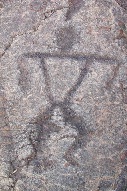 Sunday, October 13th Voices of the Earth:
Sunday, October 13th Voices of the Earth: Honoring Indigenous Peoples from Prehistory to Present.
Paul & Laura Lee Robear
Here we talk about the rich wisdom traditions left to us by generations upon generations of Indigenous People throughout time. What principles and values do you see in the foundation of these traditions, that we sorely need to restore within our society today? How are you bringing this to your own life and sphere, and what would you like to see collectively? The Cuyamungue Institute’s mission in part is to explore indigenous worldviews, through art, in a visionary and participatory way. What we experience at the core is a harmonious and interdependent relationship with nature, the interconnectedness of all life, in an enchanted universe — along with an opportunity to right our individual and collective paths, for a world founded on our mutual flourishing. We honor indigenous cultures past and present, the rich and diverse histories, traditions, and contributions of peoples native across the globe. From the four corners of the globe, indigenous groups set the stage for all to come.
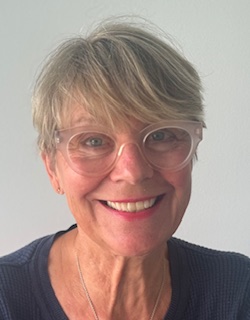 Sunday, September 29th The World as a Dynamic Web
Sunday, September 29th The World as a Dynamic WebL. Pia Shaw Ph.D
This conversation highlights the importance of Alfred North Whitehead’s (1861-1947) process philosophy. Metaphysics gives us a system of ideas that tells us what is real, what is possible, and what is valued. Much of our metaphysical perspective is absorbed through culture as though through osmosis. We find ourselves embedded in a Cartesian metaphysical position that no longer serves. It gives a disenchanted worldview, a valueless cosmos, and privileges humans as special and separated from Nature.
The transition to an ecological way of being is a struggle to disentangle from old Cartesian thinking. However, it becomes more feasible when we are presented with an alternative. Whitehead’s process philosophy offers us a radical relational universe rich in meaning and value at all levels of existence, a universe in which we are intricately involved.
Alfred North Whitehead, a mathematician and logician, turned to philosophy in his later years. He challenged the assumptions on which science was based and offered an alternative. His philosophy emphasizes the interconnectedness of all things, champions the primacy of subjective experience, and helps us reimagine our place in the cosmos—a cosmos that aims toward Beauty.
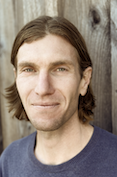 Sunday, September 22nd: Deep Belonging; Honoring the Sacred Dimension of the Universe
Sunday, September 22nd: Deep Belonging; Honoring the Sacred Dimension of the Universe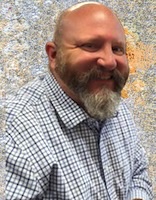 Sunday, September 15th: Anthropology of War: Cultural Context Social Impact and Human Evolution
Sunday, September 15th: Anthropology of War: Cultural Context Social Impact and Human EvolutionHere we discuss one of the cultural universals of human society: Warfare. It is one of the most enduring and complex aspects of human society being evident from the earliest days of behaviorally modern humans to modern global conflicts. Even today the words of ancient military philosophers like those in Sun Tzu’s Art of War are quoted in boardrooms and by diplomats and wars both large and small are raging across the globe. War has shaped human culture politics and evolution in profound ways. Anthropology offers us a unique lens through which to view this phenomenon not merely as historical events or strategic maneuvers but as a deeply ingrained behavior that reflects our collective human nature. We’ll explore how war is not just about violence but is interwoven with ritual religion consciousness and the very fabric of societal organization. Through this lens we aim to understand why humans engage in warfare and to explore the factors that influence its frequency and form impacts and its implications for our future.
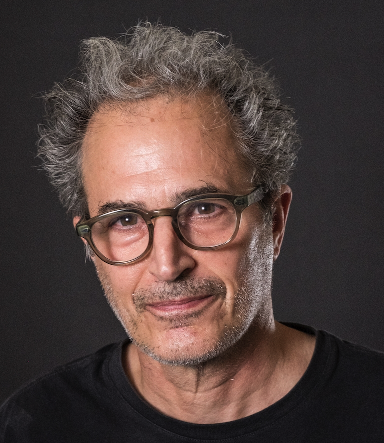 Sunday, September 8th: Intelligence, AI and Ritualistic Practices
Sunday, September 8th: Intelligence, AI and Ritualistic PracticesIntelligence has always been about creating our official reality—a process humans have engaged in since time immemorial through metaphors, mythologies, and the creation of idealized states like nirvana or savior figures. We’re going to explore this concept by comparing Sophia the robot, a project Thomas contributed to at Hanson Robotics, with a deity, and examine how the work with AI and robotics parallels ritualistic practices. We’ll also delve into transhumanism and its vision of transforming humans into hybrid cyborgs, touching on the complexities and controversies surrounding that idea.
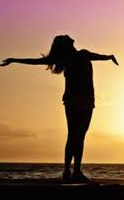 August 11th: The Unseen Hands Guiding Our Destiny
August 11th: The Unseen Hands Guiding Our DestinyWhere magic meets the mundane
Our community comes together to share notes and insights, on this grand adventure we call life. We come together on a mutual quest: to right our relationships, with our self, our communities, the universe at large, and our place in it. As seekers and change-makers, we live the examined life. We’re fond of the big questions — where are we going, individually and collectively? What navigation tools, what skills have we been gifted with, to enter the paths, the portals, the potentials that beckon us? What unseen hands do we find, have been guiding us all along? How do they show up in our life?And so, we invite you to tell us your story, of the inner promptings, the guiding lights and principles, the synchronicities, the doors that opened, those that closed, that helped you find your true Destiny, your gift to the world. How did you arrive at the inner knowing of who you are meant to be? Register to Attend
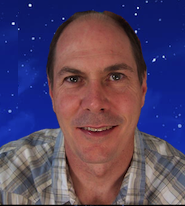 August 18th: Cosmology and Consciousness
August 18th: Cosmology and ConsciousnessStephan Martin Ph.D.
Stephan Martin is an astronomer, educator and author who has taught astronomy physics and consciousness studies at colleges, universities and learning centers across the US for over twenty-five years. His current research and writing focuses on the transformative potential of the insights of modern science and their integration into personal experience and everyday life. He continues to lead innovative and learning programs in educational holistic and nontraditional learning settings that explore the innovative results of modern cosmology with the insights and practices of the world’s spiritual and indigenous traditions. FREE Event! Register to Attend
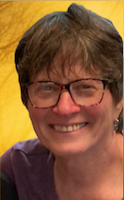 August 11th: Divine Feminine & The New Cosmic Story
August 11th: Divine Feminine & The New Cosmic StoryBernice Marie-Daly, Ph.D.
The concept of the Divine Feminine has been a central theme in spiritual and religious traditions throughout history, symbolizing the nurturing, creative, and intuitive aspects of the universe. It embodies qualities such as compassion, wisdom, and a deep connection to the cycles of nature. In the context of the New Cosmic Story, the Divine Feminine plays a pivotal role in reshaping our understanding of the universe and our place within it. The New Cosmic Story refers to an emerging worldview that integrates scientific discoveries with spiritual insights, offering a more holistic perspective on existence. This narrative acknowledges the interconnectedness of all life and the importance of harmonizing with the natural world.This integration of the Divine Feminine into our cosmic understanding challenges us to embrace a more inclusive, compassionate, and sustainable way of living, recognizing that the universe is not only a vast, impersonal expanse but also a living, breathing entity imbued with consciousness and purpose. By acknowledging the feminine aspects of the cosmos, we can begin to heal the divisions that have long separated us from each other and from the planet, ultimately leading to a more unified and enlightened human experience.
Bernice Marie-Daly, Ph.D., an educator, and retreat facilitator, holds degrees in Spirituality & Psychology, Counseling, and Philosophy and is a certified Core Energetics Instructor & Practitioner. As founder and director of Awakenings: The New School for Women’s Spirituality, Bernice facilitated in-depth programming in women’s spirituality, justice-making, and the arts. Author of Ecofeminism: Sacred Matter/Sacred Mother (The American Teilhard Association) and co-author of Created in Her Image: Models of the Feminine Divine, Bernice taught interdisciplinary courses in Environmental Studies & Women’s Studies at Fairfield University and World Religions at Norwalk Community College. Register to Attend
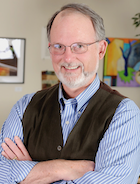 July 28th: Dark Night of Our Collective Souls
July 28th: Dark Night of Our Collective Souls The threats of annihilation on a global scale just keep piling up, making for an existential crisis on a collective level. It used to be — oh, just find a desk to duck under when the missiles launch. Looming now is a third world war, climate change burning the house down, multitudes of species disappearing. And now AI and the robots have been unleashed.What to do about this? While the planet’s richest build their deluxe ride-out-the-apocalypse bunkers, we here are C4E turn instead to that time-honored, and, rather more accessible means of keeping the PTSD at bay — let’s talk.Let’s talk about what this all means, how this impacts us individually and collectively, and how do we find our way in a broken world? How do we turn this into a rite of passage, and emerge the better for it?Our guest this week is Randy Morris. He grew up in Richland, Washington, home to the Hanford nuclear site. He spent three of his ten years teaching grades K-12 at the Hiroshima International School in Japan. So he has some personal perspective to share on the bomb, and he co-authored a book on it: Nagasaki Spirits, Hiroshima Voices: Making Sense of the Nuclear Age .Randy is a Professor Emeritus at Antioch University, Seattle in the BA Liberal Studies Program, coordinating the Psychology and Spiritual Studies. And, he is a Jungian scholar and depth psychologist, serving as Co-President of the C.G. Jung Society of Seattle — and we’ve already asked him back to talk about Jung, rites of passage, the soul, dreamwork, elderhood. He is the co-editor of the book Rites of Passage Into Elderhood.
“My preferred symbol for the work I do as a bridge because I serve both as a technical bridge between biological and human sciences. But more importantly, I serve as a bridge between the technical insight we can get from those fields and making that turning that insight into things that are both relevant and Accurate so that people can make decision better decisions based on them. I’ve discovered that the key to supporting communities and conflict is giving them the power to be able to navigate their way through uncertain future and this Approach which I’ve developed for managing fisheries turns out to have relevance to so many different conflicts we have in society today. My goal is to be able to share this wisdom and experience with anybody who wants to hear about it because I think there’s a lot of value in it.”For more than two decades, Dr. Nowlis (NO-liss) has performed science and provided advice to make environmental policies more effective and efficient. More than any other subject, he specializes in making analysis of complex systems useful and understandable to scientists and non-scientists alike.
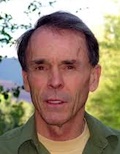 June 23rd: Sacred Sites Around the Globe: Exploration of Their Mysterious Powers
June 23rd: Sacred Sites Around the Globe: Exploration of Their Mysterious PowersMartin Gray, World Pilgrimage Photographer
Since ancient times, certain places have had a powerful attraction for billions of people worldwide. Known as sacred sites and pilgrimage places, they are the most revered locations of human civilization. National Geographic photographer Martin Gray has spent forty years visiting 2000 sacred sites in more than one hundred sixty countries. “There have been three primary motivations for my research and travels to the world’s sacred sites. One motivation has been to gather evidence showing that pre-industrial cultures throughout the world recognized the Earth to be a sacred being worthy of deep respect and gentle treatment.”
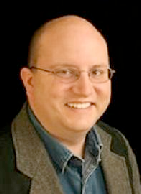
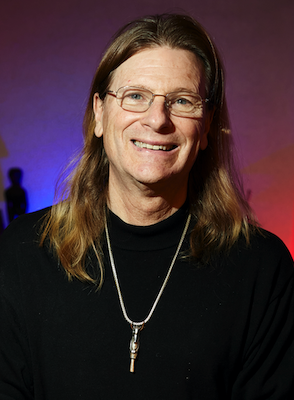
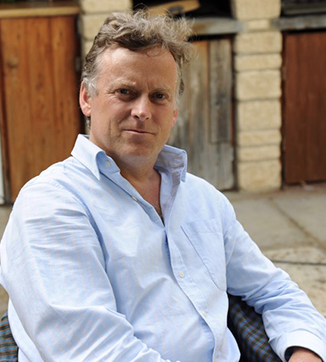
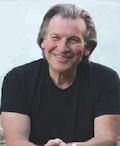 June 16th: The Contemporary Path of the Sacred Masculine
June 16th: The Contemporary Path of the Sacred MasculineTodd VanPool, David Elkington, Frank Ferrante, Paul Robear
We hear a lot these days about the Goddess and the awakening of the sacred feminine. We also must recognize the divine masculine is alive within each and every one of us as well. sacred masculine. We need to embrace the masculine and feminine energies, not to be bound by stereotypes, but to make these energies more conscious so we can heal and work together as one humanity. “When the Sacred Masculine is combined with the sacred feminine inside each of us, we create the ‘sacred
Celebrates how we frequently experience the same patterns of Nature show up again and again in our visionary work, from the microcosm to the macrocosm. Lynn Rassmussen joins us to talk about the science to this, in her new book. Lynn says: “To understand the patterns of nature and the relationship to consciousness we look to the emerging science of systems, also known as complexity science. For 14 billion years, successful systems have evolved using flows of information and energy through networks of interactions, all organizing, syncing, and emerging…. Everything—from an atom to a cell to the Universe—is made up of the same patterns. Understand how these patterns organize Nature’s systems, and you can better and more creatively organize your thinking and reasoning and the systems in which you live.”
When living at a pace that Nature did not design us for, it’s therapeutic to take a break. Our guests offer a means to do so, by “breaking patterns of hyper-arousal by offering experiences that are calibrated to switch the brain’s activity to the relax mode of the parasympathetic system.” And the delivery system is surprisingly simple — as Nature designed. A slower beat, in a free-form pattern of notes, and a mosaic of abstract color and light, in motion. Abstract, to further remove us from our day to day world, and motion, to take us on a journey. The “open-eyed meditation” of Colors in Motion Touchstones, created and curated by artists Linda DeHart and Christopher G is a celebration of light, sound, color, and flow, delivered on large and small screens. It shares much in common with the visionary journeys of our practice, on the “inner screen”!
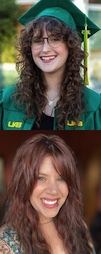 May 19th: Multi-Generational Path to Healing
May 19th: Multi-Generational Path to HealingCrossing the Divide from Boomers, Millennials & Gen Z
Olivia Russo, Nadia Black
With all that divides us in today’s world, the generational divide seems to be one of the hardest ones to bridge. Interactions between the older and younger generations are far less common today than in previous periods of history, but increasing those connections has the potential to impact some of society’s most intractable problems. Instead of seeing each other as sources of wisdom and listening for truth to emerge from different perspectives, we are conditioned to treat generations outside of our own as hopelessly out of touch. Creating a world in which different generations are more integrated requires a fresh approach; but first we need to listen to each other. Leaders of co-generational innovation agree that different age groups will more likely enjoy the connection if they share a purpose. Most people not only feel a great deal of meaning in connecting with someone of a different age than themselves but also that these connections are associated with greater well-being.
* Oliva Russo A budding social scientist from Birmingham, Alabama with a Bachelor’s in Sociology, with a double minor in Anthropology and Psychology. My current research focus spans collegiate-level pedagogical methods, ethnic diasporas, media, and historic and contemporary Civil Rights in America, and I have a particular passion for using research findings as a tool for developing public policy and cultivating awareness.
* Nadia Black Nadia works with immersive experiences to support healing and upleveling, drawing on ancient spirituality, collective healing, and visionary entrepreneurship,. Her goals include building community and leadership to solve personal and collective challenges, fuel transformative growth, and come together to build the World of the Future.
 April 28th: Forensic Anthropologist
April 28th: Forensic AnthropologistStephanie Fox, Forensic Anthropologist
We employ many tools to see further, from the micro to the macro levels and everything in-between. Our guest, Forensic anthropologist Stephanie Fox, shares stories and insight from her case files, using forensic tools to reveal what’s hidden from first glance. Forensics has its own set of tools and methodology, akin to an archeological dig, detective work, and tracking game. Find out how well TV’s CSI shows portray the field, and Stephanie’s most unusual case, most challenging case, what’s a typical case, cases she couldn’t solve, favorite tools, and more.
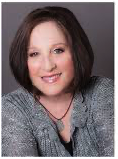 April 21st: Essentials of Medical Intuition: A Visionary Path to Wellness
April 21st: Essentials of Medical Intuition: A Visionary Path to WellnessWendie Colter, Medical Intuitive and Educator
We’ve all had moments of direct knowing, spontaneously. Did you know Intuition is like a mental ‘muscle’ that can be trained? We can learn to apply it for various purposes, for the well-being of ourselves, and others. Our guest, Wendie Colter, has much to share on this, with practical tips. She is a medical intuitive who teaches this skill to medical professionals. Not to diagnose, but to glean energetic blocks that can derail the mind, body, though a method of “seeing” into the Bioenergetic field to identify imbalances. Wendy’s approach is experiential, and evidence based. Her research in Medical Intuition has been published in peer-reviewed journals — the Journal of Integrative and Complementary Medicine, and her book, Essentials of Medical Intuition: A Visionary Path to Wellness, has won several awards. She’s the founder and CEO of The Practical Path®, Inc. and President of the National Organization for Medical Intuition (NOMI). See more at www.thepracticalpath.com
Anthropology of Consciousness Report
highlights of our time at the Anthropology of Consciousness Conference in St. Louis and the Eclipse in full totality. We also visited the Cahokia Mounds! We were there at the invitation of the Anthropology of Consciousness Conference to present on and take the anthropologists through a Ritual Posture journey —they all had wonderful experiences! We were joined by our advisory team Christine and Todd VanPool, and Tony Hull, who also presented on aspects of their wide bodies of work. We all felt like we had found a branch of our tribe, with one fascinating presentation after the other, and a fun group to share a short journey into the center of the path of totality for the Eclipse! On our last day, several of us made the short trip out to Cahokia, the ceremonial mound-builder site on the edge of St. Louis, featuring one of North America’s largest earthen step pyramids.
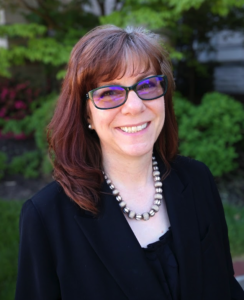 March 24th: Spiraling Pots – from Earth to Heaven
March 24th: Spiraling Pots – from Earth to Heaven![]()
Christine VanPool, Professor of Anthropology, University of Missouri
From Christine: “I propose the pots (Medio Period (AD 1200 to 1450) Casas Grandes) were animate “pot-people” created for shamanic rituals. They were created with unusual designs including painted images and incised patterns that emphasized the spinning/vertigo that was central to the shamans’ soul flight experience. In some cases, the pots were literally spun, as evidenced by the distinctive wear patterns on their bases. The shamanic designs on the pots that reflected the upper and lower worlds, the depiction of spinning in the pottery decorations, and the literal spinning of some pots reflected the sympathetic and mimetic magic that linked them to the spirit world. They were imbued with the liminal nature of the creatures they depicted, and the symbolic and occasional literal emphasis on spinning would allow them to enter into a shamanic trance in a manner similar to their human counterparts. They, thus, were designed to enter into ASC in a manner that paralleled their human counterparts.”
Over the last four years, I have worked with the Cuyamungue Institute (established by Felicitas Goodman) to produce ASC without the use of entheogens using Goodman’s Ritual Body Posture practice (Goodman 1990). I follow their ritual protocols and hold a posture while listening to a rapidly beating drum or rattle for 15 min. On numerous occasions, I have experienced the sensation of quickly spinning; it can be horribly dizzying and does strongly correspond to the feeling that I was moving through time/space into another realm. Sometimes, I fall deep into the earth; other times, I fly out into the cosmos. Many times, I found myself transforming into a flying bird during this journey. Spinning as an aspect of ASC is an interesting neurological phenomenon that needs more study.”
 March 17th: The Rock of the Sun Petroglyph Chaco Canyon
March 17th: The Rock of the Sun Petroglyph Chaco Canyon![]()
GB Cornucopia and Cherilynn Morrow
In anticipation of April 8th’s total solar eclipse, let’s honor the Skywatchers of old. About 1,000 years ago, the early Pueblo people of Chaco Canyon memorialized their own viewing, carving a telling representation of an eclipse celestial in stone — as a petroglph. Our guests, astronomer Cherilyn Morrow, and GB Cornucopia, retired Chaco interpretive ranger, note “the circle with looping streamers that resemble the sun’s outer atmosphere, or corona suggests the Chacoans celebrated, rather than feared, this event, likely witnessing a coronal mass ejection during the eclipse. This petroglyph is grouped with others at Chaco Canyon, etched into a large boulder known as Piedra del Sol. GB and Cherilynn will share a slide show of this and other petroglyphs of note, and compare these to the sun’s corona during total eclipses, and the personal experience viewing the last one.
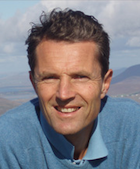 March 10th: The Cathars: History Theology & Mysticism
March 10th: The Cathars: History Theology & MysticismDavid Lorimer, Chair of the Galileo Commission
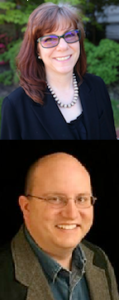 February 25th:
February 25th: ![]() The Anthropology of Trance & Emergence: Manifestions of the Spirit World
The Anthropology of Trance & Emergence: Manifestions of the Spirit World
Todd & Christine VanPool
We are excited to welcome back popular professors of anthropology at the University of Missouri, Christine and Todd VanPool. Their intensive ethnographic fieldwork and research includes Mesoamerica’s pre-Columbian art, iconography, pottery as part of their study of shamanic cultures and they see the trance model as a fundamental criterion for understanding the cultural patterns, cosmological and spiritual framework of shamanism. Will cover highlights of our exciting visit last week with the VanPools at the University of Missouri’s Cognitive Neuroscience Laboratory, and the EEG testing of the Ecstatic Trance – Ritual Body Postures. Then we will also walk-through an illustrated overview of our collaborative paper recently published in the Journal for the Anthropology of Consciousness, noting two Ritual Body Postures we use, seen in the shamanic pottery of the Mogollon culture that once spanned northern Mexico into Arizona and New Mexico. Part of the mission of the Cuyamungue Institute is looking to the anthropology of trance as a field of study that provides perspective on the cultural, social, and psychological aspects of trance states. We continue to Investigate the rituals, practices, and beliefs associated with altered states of consciousness, seeking to comprehend their significance and impact on individuals and communities. The study of trance provides insights into the complex interplay between cultural practices, spirituality, and the human experience. Through the practice of Ritual Postures we experience an “emergence experience” of an altered state of consciousness This involves a shift from the ordinary waking state to an expanded mode of awareness, perception, or experience.
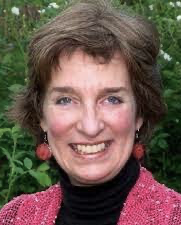 February 18th: DeepTime Vision for a Brighter Future
February 18th: DeepTime Vision for a Brighter FutureJennifer Morgan, president and founder of the Deeptime Network
Jennifer Morgan is an award-winning author, storyteller, and educator. Inspired by the work of Teilhard de Chardin, Maria Montessori, Thomas Berry, and Brian Swimme, her Universe Story Trilogy is used in childhood classrooms around the world in Cosmic Education Curriculum, and for adults to explore these concepts, she founded the Deeptime Network. She is Vice President of the American Teilhard Association.
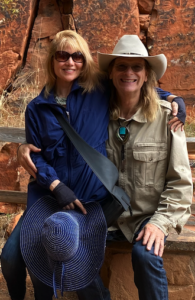 February 11th: Relationships of Transformation:
February 11th: Relationships of Transformation:Lessons in Love & Life — Share Yours!
Paul & Laura Lee Robear
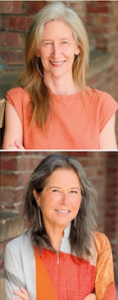 January 28th: Your Brain on ART: The Power of Art to Transform Our Lives
January 28th: Your Brain on ART: The Power of Art to Transform Our Lives![]()
Susan Magsamen and Ivy Ross
We’re on the verge of a cultural shift in which the arts can deliver potent, accessible, and proven solutions for the well-being of everyone. Magsamen and Ross offer compelling research that shows how engaging in an art project for as little as 45 minutes reduces the stress hormone cortisol, no matter your skill level, and just one art experience per month can extend your life by ten years. They expand our understanding of how playing music builds cognitive skills and enhances learning; the vibrations of a tuning fork create sound waves to counteract stress; virtual reality can provide cutting-edge therapeutic benefit; and interactive exhibits dissolve the boundaries between art and viewers, engaging all of our senses and strengthening memory. Doctors have even been prescribing museum visits to address loneliness, dementia, and many other physical and mental health concerns. A life-altering journey through the science of neuroaesthetics, which offers proof for how our brains and bodies transform when we participate in the arts—and how this knowledge can improve our health, enable us to flourish, and build stronger.
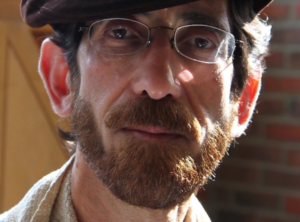 January 21st: The Dynamic Geometry of Sound: Resonance Made Visible
January 21st: The Dynamic Geometry of Sound: Resonance Made Visible ![]()
Jeff Volk – Author, Producer and Publisher on Cymatics
Jeff’s four decades exploring and explaining cymatics gives him a unique perspective on how intricate harmonic patterns can be rendered visible in normally inert powders, pastes, and liquids as they are “animated” by resonant audible sound frequencies.
A frequent guest on this program over the years, Jeff returns to show highlights of how cymatics continues to reverberate around the world, in contemporary art and leading-edge science. Enthusiasm for this research and its ever-expanding visual archives continues to filter into our culture in myriad ways, as featured in this new edition augmenting Jenny’s original experiments.
Our whirlwind tour of cymatics will focus on many of these innovative expressions that have come to light since Jeff re-published the definitive work on cymatics, combining Jenny’s two original books into a single edition in 2001.
To celebrate the long-awaited release of his extensively revised edition of Cymatics: A Study of Wave Phenomena and Vibration, Jeff will give a brief overview demonstrating Jenny’s experimental setup in operation, explaining how those images were created more than 50 years ago, and contrasting them with contemporary examples illustrating how Jenny’s legacy is being carried forward to this day, in ways that he could scarcely have imagined.
 January 14th: Trance, Posture in the Casas Grandes Shamanic Tradition
January 14th: Trance, Posture in the Casas Grandes Shamanic Tradition
Todd and Christine VanPool
Our work with Ritual Body Postures gains added academic recognition! We collaborated with anthropologists Todd and Christine VanPool on a paper recently published in the Journal for the Anthropology of Consciousness, noting two Ritual Body Postures we use, seen in the shamanic pottery of a culture long and thoroughly studied by the Van Pools. The resulting visionary experiences we have also have their correlation in the iconography on these ritual vessels. We’ll discuss the nuances of this research, and the increasing recognition of the role of postures used ritually, seen here and in other cultures, with and without use of entheogens. While our practice does not include entheogens, the pottery studied here used tobacco ritually.
Popular professors of archaeology and anthropology at the University of Missouri, Christine and Todd’s field work and research into Mesoamerica’s pre-Columbian art, iconography, pottery and shamanic cultures looks deeply into intention and meaning.
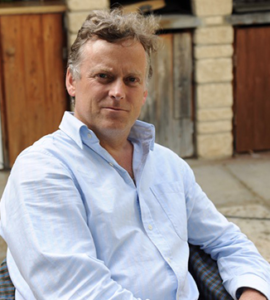 December 17th: Decoding Western & Mediterranean Mystery Schools
December 17th: Decoding Western & Mediterranean Mystery Schools
David Elkington, Mythologist / Historian
From David Elkington’s long study of the Western and Mediterranean Mystery Schools, he decodes the symbols and the seasons, as well as the unseen elements, untold stories, and how we are still influenced today by the current of the hidden traditions. How much cross-over is there, between the sacred symbols of the ancient cultures? Have a favorite ancient UK site or symbol? David will certainly have a fresh, informative, and entertaining take on it! Let’s ask him anything, and see where the conversation goes!
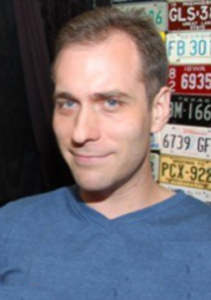 December 10th:AI and the Transformation of the Human Spirit
December 10th:AI and the Transformation of the Human Spirit![]()
How Artificial Intelligence is Transforming the World
David Hanley, Computer Scientist / Programmer
AI is appearing in seemingly every corner of modern life, from music and media to business and our individual pursuits. There’s so much it can be hard to keep up. What do we need to know in order to stay current in this fast-moving field and its implications? Artificial intelligence is a wide-ranging tool that enables people to rethink how we integrate information, analyze data, and use the resulting insights to improve decision-making—and already it is transforming every walk of life. At the same time there is an urgency to understand its potential negative effects as well. Artificial intelligence is already altering the world and raising important questions. How it is being applied in the world of finance, national security, health care, criminal justice, and transportation? Concerns include data access, personal information privacy, algorithmic bias, AI ethics and transparency, and legal implications. AI tools used to generate artwork can give users the chance to create stunning images. Language tools can generate poetry through algorithms. AI is blurring the lines of what it means to be an artist. Let’s educate ourselves to understand how AI is a growing part of lives. Bring your questions!
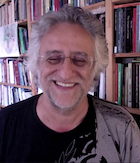 November 19th: ALCHEMY: The Philosophy of Transformation
November 19th: ALCHEMY: The Philosophy of Transformation![]()
Farzad Mahootian Ph.D
Alchemy is an ancient branch of natural philosophy, a philosophical and protoscientific tradition that was historically practiced in China, India, the Muslim world, and Europe. The art of alchemy was handed down through the centuries from Egypt and Arabia to Greece and Rome, and finally to western and central Europe. The word is derived from the Arabian phrase “al-kimia,” which refers to the preparation of the Stone or Elixir by the Egyptians. The Arabic root “kimia” comes from the Coptic “khem” that alluded to the fertile black soil of the Nile delta. Esoterically and hieroglyphically, the word refers to the dark mystery of the primordial or First Matter (the Khem).
Farzad Mahootian , Ph.D. Philosophy, M.S. Chemistry, is a Clinical Associate Professor of Global Liberal Studies at New York University where he has been teaching since 2010. He has taught philosophy, science, and humanities courses for over thirty years. He has also worked for over ten years outside of academia as a contractor with NASA’s education division during the transition to the world wide web. His research has centered on the relevance of myth and metaphor to interconnections between philosophy, science, technology and society. Recent projects include philosophy and psychedelics, and digital humanities approaches to the history of alchemy. Since 2020, he has served on the Board of Trustees of the Kristine Mann Library of the C. G. Jung Institute of New York City.
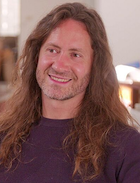 November 12th: Deciphering Ancient Texts with Modern Tools
November 12th: Deciphering Ancient Texts with Modern Tools![]()
Michael Langlois Ph.D, Biblical Scholar
Michael Langlois is well equipped to write new chapters in ancient history. He has a busy career, deciphering Dead Sea Scrolls, determining what is fake and what is real among the brisk market for ancient script, piecing together daily life among notes scribbled a few thousand years ago on handy pieces of broken pottery. He employs new tools in innovative ways to help him do so, from multispectral imaging to “texture mapping”. He combines this with his years of deep research, study, and teaching —
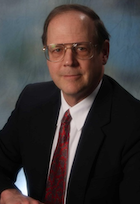 October 29th: Unexplained Sightings, Encounters of UFO’sTools
October 29th: Unexplained Sightings, Encounters of UFO’sTools![]()
Peter Davenport, Director of the National UFO Reporting Center
October, with its changing colors and crisp air, provides the perfect backdrop for our Halloween celebration of the more mysterious and supernatural aspects of life, and the recent validation by our own government on the ongoing debate over UFOs, aka UAPs. So we turn, this Sunday, to our longtime friend Peter Davenport, who for three decades has served as Director of the National UFO Reporting Center.
Talk about being in the trenches! Peter Davenport has manned and managed the US hotline for eyewitness sightings of UFOs, aka UAP. He has heard and recorded a half-million calls, so has stories and a unique perspective to share. From the wide variety of calls and illustrations of sightings, to a government official confirming the validity of his 2004 paper, “USING Using Multi-static Passive Radar for Real-time Detection of UFO’s in the Near-Earth Environment”, you’ll hear why this skeptic turned believer. Take a look at his extensive website and file your sighting at https://nuforc.org/
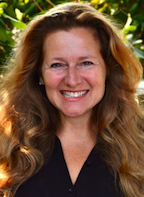 October 22nd: Eco-Afterlife: Green Burial
October 22nd: Eco-Afterlife: Green Burial
The Most Environmentally Friendly Option
Elizabeth Fournier
We’ve looked at many ancient burial rites, and how they all tell a cosmological story. In our talk with funeral director Elizabeth Fournier, its time to rewrite the message of our modern day sign-offs. There’s a better way to go than spewing more toxins with cremations or slowly rotting in a box. Natural childbirth now has its counterpart in natural funerals. Why not return our molecules, which are all on loan, gently and respectfully back to Mother Earth, with gratitude.To be composted as Nature intended with all life, we can nourish the next generations, and become a Tree of Life! Affectionately known as “The Green Reaper,” Elizabeth Fournier makes this inevitable passage more user-friendly, as we rethink deathcare with new eco and spiritually minded options outlined in “The Green Burial Guidebook”
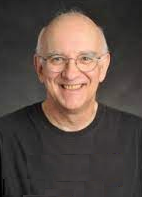 October 8th: Why Suya Sing: A Musical Anthropology of an Amazonian People
October 8th: Why Suya Sing: A Musical Anthropology of an Amazonian People
Anthony Seeger’
Like many other South American Indian communities, the Suyá Indians of Mato Grosso, Brazil, devote a great deal of time and energy to making music, especially singing. In paperback for the first time, Anthony Seeger’s Why Suyá Sing considers the reasons for the importance of music for the Suyá–and by extension for other groups– through an examination of myth telling, speech making, and singing in the initiation ceremony.
Based on over twenty-four months of field research and years of musical exchange, Seeger analyzes the different verbal arts and then focuses on details of musical performance. He reveals how Suyá singing creates euphoria out of silence, a village community out of a collection of houses, a socialized adult out of a boy, and contributes to the formation of ideas about time, space, and social identity
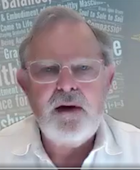 October 15th: The Wisdom of Passion: Mapping Your Way to Vitality and Success
October 15th: The Wisdom of Passion: Mapping Your Way to Vitality and Success
Peter Wallman
Passion is one of those words that people use often without really understanding the original meaning of the word. People who make a difference in their own lives and the world do so by following their passion. This means making the conscious decision to set aside other enjoyable activities to focus your energy on the most important activities. Passion is far bigger than mere motivation. Motivation is a carrot on a stick – extra hours towards your bonus, saving $2 on a packet of cornflakes. Motivations are desires that arise from circumstance and they are all about results. Motivations tend to be logical, goal-oriented and based on externals. Passions, on the other hand, are more of an intuitive, inner drive, and are therefore more enduring. Motivations are more about the head. Passions are about the whole person.
Peter Wallman is the author of best selling “The Wisdom of Passion” and inventor of Passion Mapping™ which enable individuals, pairs and groups to connect with their deepest essence and to generate clarity about what is most important and fulfilling for them.
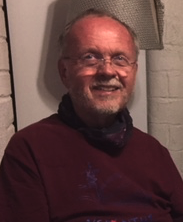 September 24th: Astronomy and the Progression of Disruption
September 24th: Astronomy and the Progression of Disruption
Tony Hull, Adjunct Professor of Physics & Astronomy
University of New Mexico
Tony Hull first heard his destiny calling as a young boy perched on a Connecticut farmhouse rooftop under a glittering night sky. He’s now helping develop NASA’s next generation Spaceborne Flagship Mission, Habitable Worlds Observatory. Along the way including participation in many spaceborne missions at NASA and in industry, he led the team of 60 over 5-years polishing the suite JWST mirrors, and now is Professor of Physics and Astronomy at The University of New Mexico.
Having surveyed the progress of understanding our place in the Universe, Tony will take us on a journey, from one disruption of our worldview to the next, as allowed by the evolution of instrumentation to better view and analyze the cosmos. We have gone from exploiting our active senses, to other parts of the electromagnetic spectrum…gamma-ray, x-ray, ultraviolet, infrared, sub-millimeter waves, microwave and long wavelength radio. And now with multi-messengers… cosmic rays, neutrinos, and even gravity waves.
He will walk us into his experience having been part of making the Webb Great Observatory, share some of Webb’s sensational imagery and ponder its meanings. In 2021, The National Academy of Science’s Decadal Survey of Astrophysics defined a new frontier, the Habitable Worlds Observatory’s (HWO) with unique features to view of Earth-like exoplanets. NASA will implement a telescope comparable in size to Webb but with stability requirements at the billionth of a millimeter level, and challenges are expected to be 100x more than those of Webb.
Tony’s life work speaks to fascination with the meeting point of inspiration, coincidence and science. He notes as we seem to get closer and closer to the magic behind it all with magnificent new instruments, new secrets of the universe are revealed. The cycle goes on…
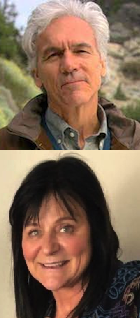 September 17th: Noosphere: Global Connection of Humanity
September 17th: Noosphere: Global Connection of Humanity
Brian Swimme Ph.D, Monica DeRaspe-Bolles
The Noosphere refers to the sphere of thought that encompasses the Earth. Brian Swimme returns, with Monica DeRaspe-Bolles, co-writer of their new video series on the Noosphere. We find much overlap with our own dialogues with Gaia, the Ancestors, and the forces of creation, prompting us to explore with them the Noosphere. it’s variously defined as the evolving, ‘thinking layer’ of the biosphere. If its ‘hardware’ is the technology that connects us globally, what drives its ‘software’, and the collective consciousness? What new possibilities are emerging, and how are the creative forces that built the Universe evolving and shaping us, preparing us for what’s ahead? If we are indeed co-creating the next chapter, how do we best engage it, guide it, and be guided by it? How do we flourish, with this added engine to our journey?
Brian Thomas Swimme is Director of the Third Story at Human Energy and professor of evolutionary cosmology at the California Institute of Integral Studies in San Francisco. Swimme did his doctoral work in gravitational dynamics in the Department of Mathematics at the University of Oregon. His work includes the video series, “The Story of the Noosphere,” written with Monica DeRaspe-Bolles, and the Emmy-award winning “Journey of the Universe” film, written with Mary Evelyn Tucker. His new book is Cosmogenesis: An Unveiling of the Expanding Universe.
Monica DeRaspe-Bolles, M.A., is a doctoral student at the California Institute of Integral Studies in the Philosophy, Cosmology, and Consciousness program. Her area of research for her dissertation is the “Third Story of the Universe,” a new structure of experience that can initiate an awakening to cosmogenesis. She and Brian Thomas Swimme wrote Human Energy’s video series “Story of the Noosphere.” Together, they have recently completed and submitted for publication a book named The Story of the Noosphere.
 August 27th:Exploring the Convergence of Science and Spirituality
August 27th:Exploring the Convergence of Science and Spirituality
David Lorimer, Chair of the Galileo Commission
David Lorimer is a a writer, lecturer, poet and editor who is a Founder of Character Education Scotland, Programme Director of the Scientific and Medical Network and former President of Wrekin Trust and the Swedenborg Society. He has also been editor of Paradigm Explorer since 1986. Originally a merchant banker then a teacher of philosophy and modern languages at Winchester College, he is the author and editor of over a dozen books, as well as three edited books about Beinsa Douno. He is also Chair of the Galileo Commission which seeks the widen science beyond a materialistic world view.
“When I was a young neuroscience professor in Virginia, I had a profound spiritual awakening during a meditation retreat which truly transformed my world view and my life. However, I didn’t know how to integrate these two parts of my life – so I basically led two separate lives, the neuroscience professor in rehabilitation medicine, and the spiritual seeker. In private conversations with some of my colleagues around the world, I discovered that they were doing the same thing in their lives – keeping this important element in their lives very private – because they feared a loss of their scientific credibility if they shared it. I wondered – how many other scientists and academics have this same experience and quandary?”
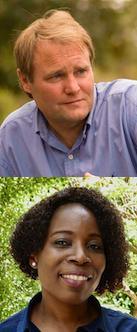 August 20th:Spirit of Revitalization: Rebuilding Mozambique’s Gorongosa
August 20th:Spirit of Revitalization: Rebuilding Mozambique’s Gorongosa
Gregory Carr and Elisa Langa
Gregory Carr is the American entrepreneur, philanthropist and visionary who in 2008 first dreamed of bringing Gorongosa, a national park in Mozambique, back to life. Once a popular wildlife park, its million acres were ravaged by civil war. This is the story not only of how, but why he answered the challenge, as well as hurdles faced, victories won, and gifts shared. Today, the flora, the fauna, the local communities — all are thriving.
With Elisa Langa, Director of Gorongosa’s Department of Human Development, Greg shares the story of how he and his team accomplished what National Geographic calls “perhaps Africa’s greatest wildlife restoration story”. They did so with ecotourism, conservation of the land, as well as building community, providing healthcare, a sustainable coffee farm, and education — from a children’s school to a Master’s in Conservation Biology, the only master’s program in the world taught entirely within a national park, to Elisa’s innovative programs for girls’ education and women’s empowerment. This inspirational story reveals how an ecosystem’s complex parts enhance one another, with a hands-on, real time case study for reclaiming our planet — for the good of us all.
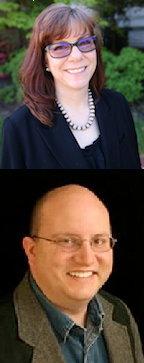 August 13th: An Anthropological Study of Spirits
August 13th: An Anthropological Study of Spirits
Christine VanPool, Todd VanPool, Professors of Anthropology, University of Missouri
Taking closer look from an anthropological perspective our guests, Todd and Christine VanPool, explore the cultural importance of spirits, what spirits want, and how humans interact with them, using examples from around the world and through time. Examples range from the vengeful spirits of the Zulu that cast lightning bolts from clear skies to punish wrongdoers, to the benevolent Puebloan Kachina that encourage prosperity, safety, and rain in the arid American Southwest. Using case studies illustrate how humans seek to cooperate (or counteract) spirits to heal the physical and spiritual ailments of their people, to divine the truth, or to gain resources. Building from their cross-cultural analyses, the authors further discuss how our physiology and psychology impact our interaction with the spirits. Readers will come away with an appreciation of the beauty and power of the spirits that continue to shape the lives of people around the world. They share their extensive and groundbreaking research in a recently published book “An Anthropological Study of Spirits.”
Popular professors of archaeology and anthropology at the University of Missouri, Christine and Todd’s field work and research into Mesoamerica’s pre-Columbian art, iconography, pottery and shamanic cultures looks deeply into intention and meaning.
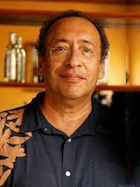 July 30th:Cacao: The Sacred History of Chocolate
July 30th:Cacao: The Sacred History of Chocolate
Nisao Ogata Ph.D
Nisao Ogata’s field work and research in the rain forests of the Americas, in ethnobotany, systematics, biodiversity, conservation biology, diversified agroforestry systems focuses on cacao. Before chocolate became a favorite elixir around the world, the cacao tree has a 3,000 year history, revered, grown, and used in sacred ceremony by the ancient Olmec and Maya. Nisao’s ethnobotany work with modern-day Maya, as well as Mazatec, Chinantec, Nahuatl, Totonac, Tepehuas & Mixe-Zoque, Jibaro-Achual, Kichwa, and Huaorani groups, brings lessons not just in sustainability and cultivation, but cultural traditions and community that we can use today.
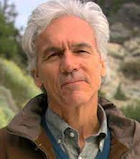 July 23rd:Cosmogenesis: Evolving with an Expanding Universe
July 23rd:Cosmogenesis: Evolving with an Expanding Universe
Brian Swimme Ph.D
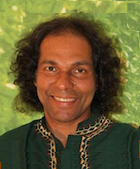 July 16th: Collective Journey for Planetary Healing: Seeding a New Vision of Humanity
July 16th: Collective Journey for Planetary Healing: Seeding a New Vision of Humanity
Kiara Windrider
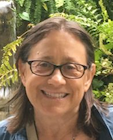 July 9th:Ancient Texts, Cultural Heritage & Healing
July 9th:Ancient Texts, Cultural Heritage & Healing
Janet Rudolph, Author of “Desperately Seeking Persephone”
Janet began researching the female spiritual leaders of history, and found a museum exhibit around one historical figure, shown in an artifact in a specific pose. Experimentation holding that posture led her to us. Janet will share that story, and her work exploring the original Hebrew letters derived from Egyptian hieroglyphs, for their original meaning and context, and sharing her shamanic initiations recounted in her new book, “Desperately Seeking Persephone” — an apt title for her story of also descending to the metaphorical underworld, and fighting her way back, to find wholeness. Janet says, “After a life long interest in comparative religion, I finally answered the call of shamanism over 20 years ago. I have traveled throughout the world to experience and learn first hand how the mysteries of life have come to be expressed, blessed, honored and lived in differing lands and cultures. I have studied and been initiated into different cultural traditions, to return to my earthly roots, my cultural and ancestral Jewish heritage, the people of the Tanakh.”
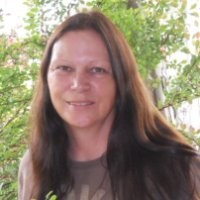 June 25th: A Long & Complex Peopling of the Americas
June 25th: A Long & Complex Peopling of the Americas
Dr. Paulette Steeves PhD-(Cree-Metis), Indigenous Archeologist
Paulette Steeves cites the accumulating evidence from genetics, linguistics, geology and archaeology revealing a far longer and more complex history of the first human migrations to the Americas. This story begins far earlier than 13,000 years ago when the Ice Age’s end (re)opened the land bridge from Siberia to Alaska. Why the resistance to the mere notion of earlier dates? How early? Why does Dr. Steeves believe it could be 100,000 years ago? What clues are found in indigenous origin stories? Who are the American and European archaeologists excavating and reporting on these early archeology sites, known as “pre-Clovis”? (Clovis being the post-Ice-Age, un-contested culture and era) and what are they finding that is changing the story on who, when, where, and how humans arrived in the Americas? And what are the implications, from both the Indigenous, and Western, points of view?
Dr. Paulette Steeves.PhD-(Cree-Metis), is the author of The Indigenous Paleolithic of the Western Hemisphere is an Indigenous Archeologist with a focus on the Pleistocene history of the Americas. Steeves was born in Whitehorse, Yukon Territories and spent her childhood in Lillooet, British Columbia
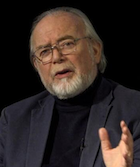 June 18th: Earth Lights and the Acoustic Archaeology of Ancient Sites
June 18th: Earth Lights and the Acoustic Archaeology of Ancient Sites
Paul Devereux, BA, FRSA
He concludes the mystery also lies within us, that we haven’t really fully understood our place in the world, and thus see the mystery as outside us. A prolific author, he was among the first, in his 2002 book Stone Age Sound Tracks to notice how natural acoustic properties of many ancient sites were celebrated very early on, as places where Earth herself added voice to ritual.
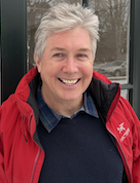 June 11th:
June 11th:
“I’m a picture maker, not a picture taker,” says Skip Hine, “a visual story-teller.” This award-winning photographer and author of “Memories in Hine Sight: My Life with a Camera” takes us the behind-the-scenes in his advertising, corporate and commercial photography. He doesn’t work alone, but with a talented crew, and despite all the advance prep, finding the most artistic results within the constraints of time, budget, changing circumstance often demands split-second problem solving. This is not a ‘how-to’ but a ‘how he did it’ retrospective over his 45-year, globe-trotting career, and a chance to reflect on how we ‘consume’ images, how their delivery has changed, and what, with the advent of AI, the future will bring.
Some define our modern age as one where objective science pushed out any belief in myths and magic, any ‘enchantment’. “Disenchantment is a foundational myth of the new human sciences that emerged during the nineteenth century. By treating magic and religion as anachronisms, anthropology and sociology reinforced the myth of disenchantment, while promoting their own claim to scientific status,” writes Jason Josephson-Storm. In The Myth of Disenchantment: Magic, Modernity and the Birth of the Human Sciences, Jason notes that historically, and contrary to the dominant narrative, attempts to suppress ‘enchantment’ have mostly failed, even within the sciences. We ask, what part of this is due to our surprisingly widespread experiences and encounters with the ‘mysteries’? What drives the divide between science and spirituality? How can we resolve this, and find harmony between our lived experience, and our personal and collective worldviews? What are the implications for finding that balance?
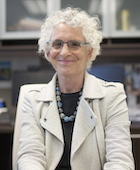 May 28th: A Window Into Our Interconnectedness: The Science of Self-Expression & Identity Formation
May 28th: A Window Into Our Interconnectedness: The Science of Self-Expression & Identity Formation
Ann Danoff, MD – Endocrinology
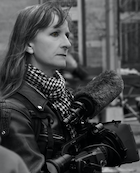 May 21st: Film Can Help Change the World
May 21st: Film Can Help Change the World
Tyler A. Chase, L’ORAGE Films
We are all on a quest, and film is a compelling and vivid way to share it, bringing the audience along to explore the human condition, showcase shared experience, challenge assumptions, shape worldviews, and inspire action. Documentaries can ask pivotal questions and help usher our emerging global community to greater understanding. We go behind the scenes with Tyler Chase, to ask, what led her to film? Why documentaries as her chosen medium? How does she personally commit to, and greenlight a project? What is her creative process, her storytelling mission and talents, that guides the long and arduous process of bringing a story to an audience? Tyler has several projects in various stages of development, production and post. We too have been following this story, and Tyler will share insights and research, along with drone footage of a natural feature of the landscape resembling a mammoth as cited by recent guests. Tyler says “My film is about the ongoing cultural erasure of Native Americans through the destruction and colonial interpretation of Americas original historical and sacred sites. “
Tyler Chase’s documentaries, Sweet Soul in Exile and A Castle in Brooklyn, King Arthur won many awards at film festivals, and led to her participation in human rights forums, from the White House to the United Nations, where her film footage was screened as testimony. She wears many hats, from Director, Producer, Writer, Fundraiser, Cinemaphotographer and as an FAA certified drone pilot. See more on the films of Tyler A Chase athttps://www.lorage.com
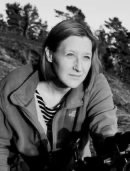 May 14th: Beyond the Visible – Hilma Af Klint
May 14th: Beyond the Visible – Hilma Af Klint
Halina Dyrschka, Filmmaker, Director, Producer
Hilma Af Klint was a Swedish artist and mystic whose paintings are considered among the first abstract works known in Western art history. No one had created paintings like hers before – so monumental in scale, with such radiant color combinations, enigmatic symbols and other-worldly shapes. In an era of limited creative freedom for women, her paintings became an outlet for her exceptional intelligence, spiritual quest and ground-breaking artistic vision.
The subject of a recent smash retrospective at the Guggenheim Museum, af Klint was for years an all-but-forgotten figure in art historical discourse, before her long-delayed rediscovery. Halina Dyrschka’s dazzling, course correcting documentary describes not only the life and craft of Af Klint, but also the process of her mischaracterization and her erasure by both a patriarchal narrative of artistic progress and capitalistic determination of artistic value. Director Halina Dyrschka joins us to talk about her own journey in making this compelling and powerful film and the importance of shattering the art world narrative of marginalizing woman artists.
Halina Dyrschka is an award-winning director and producer. She studied acting, classical singing, and film production, then founded AMBROSIA FILM in Berlin. Her first short film, “9andahalf’s Goodbye”, featured at 40 film festivals worldwide, won several awards. BEYOND THE VISIBLE – HILMA AF KLINT, Halina’s first directorial feature documentary, is the first film made on this extraordinary artist. Translated into nine languages, find the film on streaming services, and watch the trailer at https://www.youtube.com/watch?v=UGw9sAxhXXw
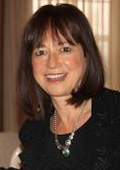 May 7th: The Science of Love:
May 7th: The Science of Love:
Healing Our Relationship to the World
Nedra Fetterman Ph.D
 April 30th: Oldest Traces beyond the Arctic Circle: Paleolithic People of North America
April 30th: Oldest Traces beyond the Arctic Circle: Paleolithic People of North America
Jiří Chlachula, Ph.D.
Adam Mickiewicz University | UAM · Institute of Geoecology and Geoinformation
Did ‘Old World, early Paleolithic’ people reach North America during the Ice Age? Our guest, Prof. Jiří Chlachula, archaeologist and geologist, shares evidence they did, at about the same time they colonized Europe — 30-40 thousand years ago. He’s examined the oldest traces of human occupation in North America and Siberia. Of course, this is contested and controversial, because the old story goes that it would’ve been impossible until the Ice Age melted off that land bridge, connecting Siberia to the Americas. And that only happened 12,000 years ago not 30 or 40, when the ice age was at its peak. Find out why our guest, a Geologist as well as an archaeologist, having made an in-depth study of those terrains and past climate has to say. Prof. Jiří Chlachula spent 8 years in Canada and a total of 4 years in Siberia. And on the Faculty Of Geographical and Geological Sciences of Adam Mickiewicz University for almost 10 years.
 April 23rd: Ceremony: Origins, Traditions and Spirituality
April 23rd: Ceremony: Origins, Traditions and Spirituality
Leon Sam Briggs, Seneca Elder
We continue to support and respect the need for restoring indigenous life ways. The ways of respecting the Natural Laws of Mother Earth and Father Sky, to live in peace with each other and to ensure harmony with nature, the Circle of Life, and within all Creation. Our guest will share the power of language, song, art, dance of Seneca culture, and how the culture and values remain strong and intact. Leon has experimented with recreating Palo-Indian stone tools as well as tools from mastodon bones.
Leon Sam Briggs, is enrolled Tonawanda Seneca whose native name is H oya’degay hus, “ he helps always” hawk clan, In 2004, he was ordained as a spiritual leader of the American Metis Aboriginal Association. He works in traditional Arts of beading, quill, and leatherwork. He speaks on his traditional teachings in herbology, (focused native uses of plants), and works as a cultural consulting.
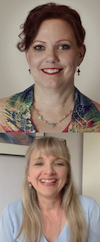 April 16th: Empowerment of Women: Resetting Roles & Goals
April 16th: Empowerment of Women: Resetting Roles & Goals
Leslie Zehr, Keren Brown
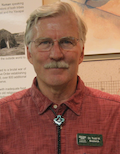 April 9th: The Great Murals of Baja California
April 9th: The Great Murals of Baja California
A Glimpse into the Spirit World of Ancient Hunter Gatherers
Dr. Todd Bostwick
Archaeologist Todd Bostwick will share his slideshow of the Great Murals of the Baja California Penninsula of Mexico, where a Hunter Gatherer culture some 7.500 years ago created up to 10 foot tall paintings on vertical cliff walls. With thousands of sites, this was a culture that endured, with a shared symbolic view of the world, expressed with petroglyphs, and pictographs, with vivid polychrome colors depicting large anthropomorphs and the local fauna. This is a remote area. It’s a multi-day trek on mules and burro caravans to reach. Located mostly in wilderness areas where there are no roads many of the sites can only be reached by mules and burro caravans. Dr. Bostwick, an professional archaeologist for 43 years, will share his personal experiences visiting this UNESCO designated sites current ideas about what these glorious pictograph panels may represent..
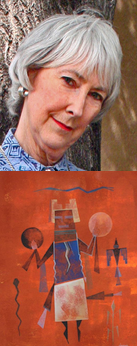 April 2nd: Art, Trance and Ritual
April 2nd: Art, Trance and Ritual
Lynda Paladin
Lynda shares a retrospective on the art of her late husband, David Paladin, who painted in a trance state, verified in the lab, of beta plus theta brain waves — so, similar in this way to the ‘waking dream state’ that we work with, with ritual. Lynda uses ritual in innovative ways, and has insightful stories of creating ceremonies for individuals with everyday objects from their lives, to symbolically work through life passages, overcome emotional trauma, and more.
“David Chethlahe Paladin’s visionary art contains ancient and archetypal symbolism less centered in his Navajo cultural roots, but more from a universal source of mystical knowledge. It is as if a tribal shaman, freed from the boundaries of a limited belief system and its familiar symbols suddenly was to become aware of a cosmic knowledge so powerful as to speak to the universal experience of humankind.” His associations with indigenous people led to his education as a shaman by the Huichols and Tarahumaras of Mexico, the Pueblo Indians, and by the Australian Aboriginals. The rich belief systems they shared with him provided the basis for his visionary art. There is more about his history as an American Indian artist and as a shamanic artist in the articles provided on the Publications tab and the drop down Painting the Dream tab.
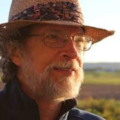 March 26th: The Art of the Ice Age: Masterpieces of Mystery
March 26th: The Art of the Ice Age: Masterpieces of Mystery
James Harrod – Center for Research on the Origins of Art and Religion
What can we project onto the art of the Ice Age, by way of understanding? Does our own lens cloud our vision, and what aspects of mind and experience do we share, that might help illuminate the earliest recorded art? Art appeared so sophisticated, it proves that the cognitive faculties we value so highly today were fully evolved tens of thousands of years ago. It was the mammoth, and the bison and that captured the imaginations of these artists and inspired their greatest work.
James Harrod, Ph.D. is a psychotherapist and a scholar specializing in prehistoric art, religion and semiotics. He has authored articles on the decipherment of the protolanguage of Upper Paleolithic Europe and on decoding Upper Paleolithic religion and spiritual transformation processes. He has also published on the origins of symbol and mind two million years ago as evidenced in the pebble tool culture of Homo habilis.
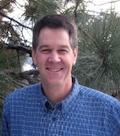 March 19th: Environmental Consciousness: Connecting Gaia’s Body and Our Body
March 19th: Environmental Consciousness: Connecting Gaia’s Body and Our Body
Daniel Spencer, Professor Emeritus, Environmental Studies The University of Montana
We continue to explore the relationship between human experience and our environment. Environmental Consciousness shifts our perspective from anthropocentric to ecocentric not independant of our environment but prioritizing our deep interconnected dependence on nature.
We’ll explore this with Daniel Spencer Professor Emeritus Environmental Studies at University of Montana. He shares his wide-reaching research and travels that shaped his views on Globalization Greening Religion Earth Ethics and Ethical Issues in Ecological Restoration. He agrees it’s time to rethink our relationship to our planet our sexuality ecology and the sacred. He sees ecological ethics as “the true baseline for all ethics, with true justice built upon right relation among all life, all species, not just ours.” He adds “only when we are able to integrate our sexuality with our spirituality will we fully experience the divine – and fully live out our ethical values.” Here’s the basis for a lively discussion!Which is part of the mission of institute is devoted to academic balance distinguished by the creative interplay of direct experience.
 March 12th: Bridging Our Collective Traditions: Connecting Spirituality and Global Mind
March 12th: Bridging Our Collective Traditions: Connecting Spirituality and Global Mind
Panel Discussion; Ashok Gangadeen Ph.D , Nathan Saith, Nedra Fetterman, PhD
A discussion on finding connections between our faith, traditions and beliefs. We have shared stories and these stories can unite us. The ability to understand respect and work well with people from different perspective is more important than ever for the survival of our global civilization and our collective well-being. Let’s engage together to understand ourselves and others within the broader context of our complex world.
Ashok Gangadeen returns to guide a “dilated dialogue” between various disciplines. Our panel bringing many voices together in our shared quest for unity. The importance of looking at whatever spiritual approach you are most involved with and to notice the potential limitations of exclusivity that might leave out those of different orientations. You may also notice that you need to open yourself to considering others in a more universal, accepting, and inclusive way. We can embrace traditions that have a greater integrity and encourage a life that is caring for all of humanity as a whole.
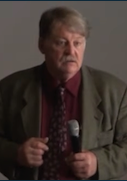 March 5th: Ancient Ancestors, Mastodons & Ritual
March 5th: Ancient Ancestors, Mastodons & Ritual
New Discoveries in Paleo-Indian Archaeology
Dr. Richard Michael Gramly
The peopling of the Americas is a hot topic with new theories and dates emerging from new found evidence. Anthropologist Michael Gramly expands upon the Land Bridge migrations with archeological evidence he interprets as mammoth-tusk sled rails which carries the Siberian segment of the Gravettian culture of the Ice Age south into the Americas 15000 years ago. He follows up on James Harrod’s presentation last week comparing the cosmologies myths burial practices and shamanic gear of Gravettian Siberia and Native North America to find close correlations demonstrating a continuity of cultures. Gramly will focus on the archeological findings and his wide research in both Old World and New World sites to find further evidence to push back the dates of the Land Bridge migrations. Gramly is an archeologist and museum curator. He was a visiting assistant professor at SUNY, Stony Brook in 1975-1977, and then a research assistant at the Peabody Museum at Harvard University from 1978-1979. He was an exhibit planner for the Maine State Museum in Augusta, from 1979 to 1980. From 1970 to 1971 he was a volunteer in the United States Peace Corps in Kenya. He currently works as the curator of anthropology for the Buffalo Museum of Science in New York. Gramly has published articles and books on anthropology and archeology.
 February 26th: Ice Age Cultures in the Americas
February 26th: Ice Age Cultures in the Americas
James Harrod – Center for Research on the Origins of Art and Religion
James is longtime friend of the Institute and Dr. Goodman. Working with anthropologist Michael Gramly, adjunct professor at Canisius College in New York, they are identifying Clovis-era mammoth tusks, split lengthwise, as possible sled runners, as well as art pieces, that reveal much more about this early culture. James Harrod, Ph.D. is a psychotherapist and a scholar specializing in prehistoric art, religion and semiotics. He has authored articles on the decipherment of the protolanguage of Upper Paleolithic Europe and on decoding Upper Paleolithic religion and spiritual transformation processes. He has also published on the origins of symbol and mind two million years ago as evidenced in the pebble tool culture of Homo habilis.
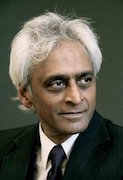
LOGOS: Awakening the Global Mind. The Underlying Unity of all Reality
Ashok Gangadean, Ph.D., Haverford University
 Common Sense Spirituality: An Embodied Way of Being
Common Sense Spirituality: An Embodied Way of Being
Frank Ferrante
Back by popular demand: With warmth, humor, playfulness, Frank Ferrante has much more to share on righting our path, personally and collectively. His common sense approach is not about transcending our humanness, rather, the goal is finding meaning and spirituality within our imperfect daily lives. “I got lost while I was looking for myself. I had become adept at exercising my will in order to negate my will.’ he says. Find himself, he did, and now as a recovery counselor, he draws upon his personal lessons to support others on the most difficult passages of their journey. Frank says he finds prayer “not a petition, but a summoning of the Divine within”. Forgiving others led to forgiving himself, and his shadow side.
Author of the book and featured in a film of the same title, May I Be Frank shares just one pivotal part of his life from obesity and drug addiction to health and happiness, finding the love, redemption, and transformation he long sought.
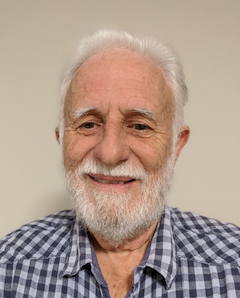
Cycles Within: Our Inner Relationship to the Cycles that Surround Us
Ray Tomes, Cycles Research Institute
Ray Tomes studies cycles of all kinds. Those within our own bodies, and Earth’s body, are of particular interest, and the many ways we are tuned, along with all of life, to our planet. What are these myriad cycles, and how do they govern us? Our first interview with Ray, on his “Harmonics Theory of the Universe” made the case that we beat in time with the Cosmos, here Ray will drill down into cycles small and large, long and short, among the animate and inanimate.
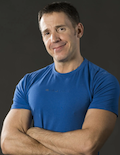 Psychology of Survival: Essential Skills for Surviving the Modern World
Psychology of Survival: Essential Skills for Surviving the Modern World
Fabrizio Nannini
“Surviving life-threatening situations is 80% a mental game” says Fabrizio Nannini, author of a best selling manual Mental Survival on survival psychology. How can we tap into research from modern psychology to reach our fundamental human goals in more effective and fulfilling ways? “ Getting in touch with your deepest fear, and strengths, you’ll know yourself in new ways. There are plenty of proven ways to develop the adaptability, patience, and brainpower needed to overcome the trials from adverse conditions.
Fabrizio Nannini is an Italian writer specialized in survival psychology and anthropology. He is a certified Mental Coach, facilitator, using survival exercises for team building. “Survival is often more ‘McGiver’ than ‘Rambo’, and one survives alone,” he says, “only through cooperation.” A shamanic practitioner, Fabrizio finds deep connection between survival psychology and shamanism. We cover skills and principles we can all adopt, managing our instinctual “fight or flight” response with posture and breathing, the multi-use items in he depends on, and more. Email us for a copy of his tool kits for hiking, road trips, and household emergencies.
 Embracing the Power to Change
Embracing the Power to Change
Frank Ferrante
Author of “May I Be Frank”
“What happens when Tony Soprano meets Deepak Chopra? That’s how people have described my story. I might throw some Woody Allen in there and a dash of Hunter S. Thompson.” So says Frank Ferrante of his amazing journey from obesity and drug addiction to vibrant health and happiness.
Ferrante suffered from a slew of issues that were his unhappy legacy as an ex-junkie and ex-alcoholic: hepatitis C, chronic fatigue, joint pain, respiratory issues, depression, suicidal thoughts, and a libido that had gone into early retirement. He thought that “vegan” was a planet, “wellness” was not in his vocabulary, and he couldn’t be bothered with self-help. He was for those very reasons the best candidate for a major personal transformation. Through Frank’s story of love, redemption, and transformation, we witness the power of change for themselves and the world.
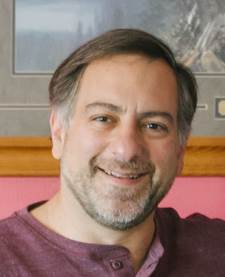 Science meets Spirit: A Family Legacy
Science meets Spirit: A Family Legacy
Jeffrey Dunne Ph.D
President, International Consciousness Research Laboratories, (ICRL)
Jeff is carrying on the work of his late mother Brenda Dunne, who with Robert Jahn founded and ran the PEAR Lab at Princeton studying the effects of consciousness using random number generators, among other experiments. What was it like hanging out at the lab as a kid watching the trial runs? (“Brenda would assign us, if we were ever bored, to go ‘create a universe’, and report back to her”, says Jeff.) The original PEAR equipment has found a new home, and is up and running — new answers does it seek to answer? Jeff joined Brenda in 2017 to co-direct ICRL, with the goal of “integrating our understanding of consciousness to unify art, science, health, and education”. With Brenda’s passing, he now serves as ICRL President, and is busy expanding the mission with new experiments and practical applications.
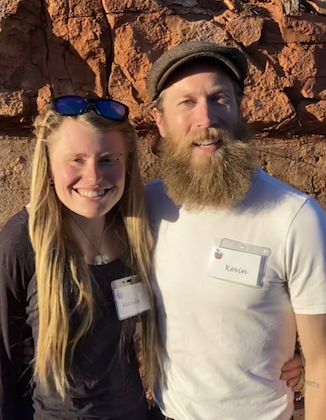 Trekking the Wild: The Long Distance Way
Trekking the Wild: The Long Distance Way
Mandy Redpath & Kevin Savage
Perpetual Long-Distance Thru-Hikers Mandy and Kevin have answered perhaps the ultimate back-to-nature, call-to-adventure: They’ve organized their lives around long-distance spending up to 5 months on the trail, often walking 20 miles a day. And they’ve been at it for 14 and 8 years, between them. Their stories and hard-won insights, logistics, and strategies range from short-term vs long-term gratification and the long game, how to reframe boredom, finding the big and the small rewards, adapting quickly when circumstances change, encountering wild animals, avoiding hypothermia and dehydration, listening to the body’s needs, supplying adequate nutrition and calories, pre-post-and during a long hike, post-trail depression, how we ‘carry our fears’, tips on gear when every ounce counts, van-life, interim seasonal work, building community with fellow Thru-Hikers, and more. See Mandy’s blog at https://travelingnaturejournal.com
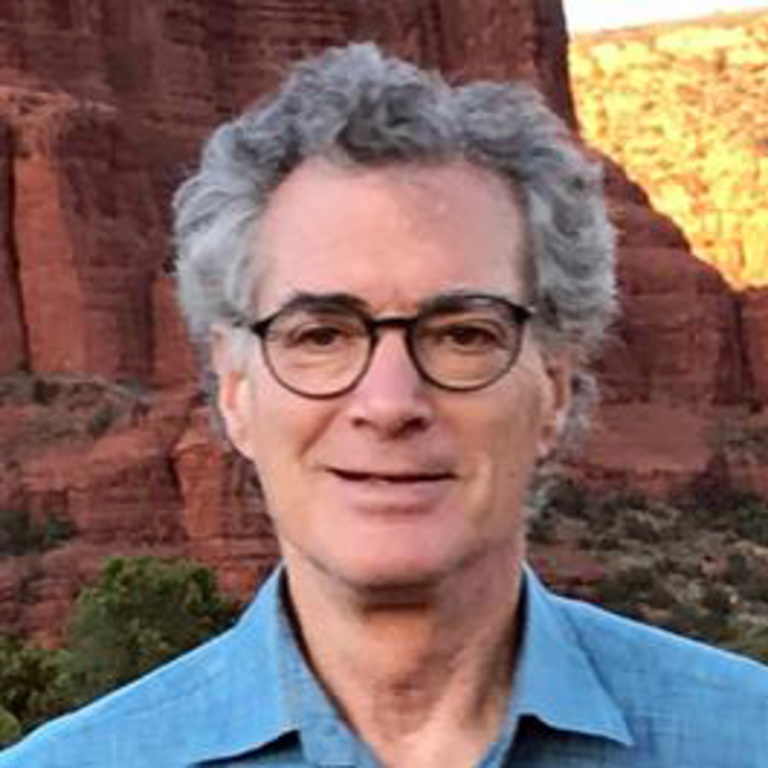 DIVINATION: Practices of Ancient India (Part II)
DIVINATION: Practices of Ancient India (Part II)
Frederick M. Smith
Professor Emeritus, Sanskrit and Classical Indian Religions University of Iowa
Divination has a sense of foretelling, predicting, or prophesying. It is an integral part of every shamanistic tradition and lineage from the most ancient times. It is vilified in the modern world as unscientific and superstitious, and associated with conjurers, illusionists, and popular magicians. But a renewed discussion of its history, its uses, and its importance in virtually all cultural, religious, and shamanistic systems, as well as its correspondence with recent thinking on synchronicity and perspectives on the harmony and flow of the natural world should enable us to think about it a bit differently. It is impossible to cover every divinatory practice in one talk, from astrology to tarot to dice to oracular possession to sorcery and prognostication of all kinds. I will discuss divinatory practices drawn from my own study of ancient Indian texts, including medical and texts on shamanic healing, and extensive fieldwork in India, which I hope will lead to a discussion of why apparently disparate parts of our available environment inform each other in ways that might be much more natural than supernatural. My point is that the shaman sees that forms, ideas, and entities flow into each other through the formless, that they are strands of the same cloth that mesh with each other because they are part of a whole and formless fabric.Fred’s vigorous research has included major forays into premodern North Indian devotional philosophy and poetry (of the Pustimarga of Vallabhacarya), deity and spirit possession in South Asia (on this see his important book, The Self Possessed [Columbia University Press, 2006]); Indian medical literature and the practice of Ayurveda, the great Sanskrit epic or Mahabharata, the history and practice of yoga, and continuing investigation into Vedic and other forms of Indian ritual performance.His training in India (where he lived for sixteen years) and at the University of Pennsylvania was text-critical, in the study of Sanskrit literature. His eye has always been diachronic, considering ritual, practice, or text over centuries or millennia. Example of this are his studies in the performance of Vedic ritual in modern times, which utilize several millennia of texts in addition to his own “Vedic fieldwork,” or in the textual history of deity or spirit possession, supplemented by both modern ethnographic writing and his own forays into the field.
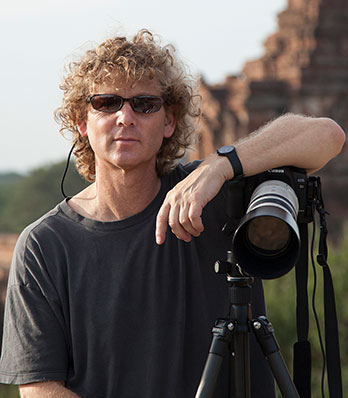 December 11th: A Photographers Journey:
December 11th: A Photographers Journey:
Capturing the Wild, Sacred Beauty that Surrounds Us
Scott Stulberg – World Photographer
Scott Stulberg’s love for travel and photography has led him to many remote corners of the globe; Southeast Asia being his favorite destination. He captures breathtaking images of wildlife, world landmarks, cityscapes, and landscapes in a celebration of Nature’s beauty. He leads photo safaris and workshops around the world, with a focus on “seeing differently” with his students, and his images have been featured in countless magazines including National Geographic and Time, in campaigns for Fujifilm and major department stores, and on permanent display at the United Nations. A Sedona, Arizona resident, he’s the author of “Passage to Burma”.
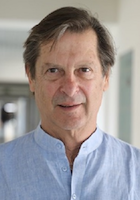 December 4th: The Science of Dream Interpretation
December 4th: The Science of Dream Interpretation
Frederick L. Coolidge Ph.D, Professor of Psychology, University of Colorado
 November 27th: Decoding Ancient Artifacts
November 27th: Decoding Ancient Artifacts
Christine & Todd VanPool
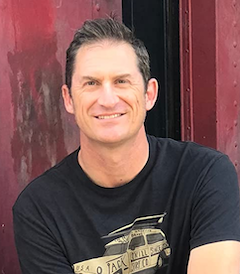 November 20th: Myths Tied to the Stars
November 20th: Myths Tied to the Stars
David Warner Mathisen
What the breakthrough Hamlet’s Mill begun, Mathisen’s Star Myths of the World carries forward, with more links between the world’s mythology, and a shared system of celestial metaphor. He will decode how this ancient system works, and the mythic ‘language of the stars’ and its “vocabulary” and “grammar”. David Warner Mathisen is the author of a new series of books entitled Star Myths of the World, and How to Interpret Them, which diagrams the astonishing evidence that virtually all the myths, scriptures, and sacred stories of humanity – from all regions of our planet, and across the millennia – are based upon a common system of celestial metaphor.
 November 13th: Cycles in Nature: Long & Short. Near and Far
November 13th: Cycles in Nature: Long & Short. Near and Far
Ray Tomes
Says Ray: “G’day, I’m Ray Tomes. I practice Vipassana Meditation and study cycles (the type without wheels). Retired at 42 to work out the formula for the Universe. Effectively its a giant musical instrument, and everything in it (including us) is just vibrations. Really!” Milankovitch, hormonal, financial, evolutionary: From the macro to the microcosm, we can find cycles everywhere. What drives cycles? How are we governed by them? How might we work with cycles? Ray Tomes deep look into the nature of cycles finds a ‘harmonic theory of the universe.’
Ray Tomes is the Science Director of the Foundation for the Study of Cycles and Director of associated Cycles Research Institute. Ray does research in cycles relating to Theoretical Physics, Paleoclimatology, climate, Economics and everything else. He developed CATS (Cycles Analysis and Timeseries Software) which is available free at Cycles Research Institute website. Author of Harmonics Theory.
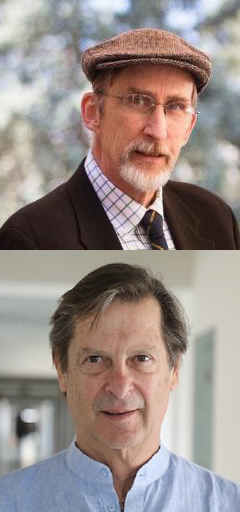 November 6th: How to Think Like a Neandertal
November 6th: How to Think Like a Neandertal
Thomas Wynn & Fred Coolidge
Co-authors of How to Think Like a Neandertal, archaeologist Thomas Wynn and psychologist Frederick L. Coolidge decipher the inner life of Neandertals from recent fossil and archaeological evidence. In tracing our cognitive and evolutionary development, they’ll also correct common misconceptions. They have teamrd up to provide a brilliant account of the mental life of Neandertals, drawing on the most recent fossil and archaeological remains. Indeed, some Neandertal remains are not fossilized, allowing scientists to recover samples of their genes–one specimen had the gene for red hair and, more provocatively, all had a gene called FOXP2, which is thought to be related to speech. Given the differences between their faces and ours, their voices probably sounded a bit different, and the range of consonants and vowels they could generate might have been different. But they could talk, and they had a large (perhaps huge) vocabulary–words for places, routes, techniques, individuals, and emotions. Extensive archaeological remains of stone tools and living sites (and, yes, they did often live in caves) indicate that Neandertals relied on complex technical procedures and spent most of their lives in small family groups. Thomas ad Fred sift the evidence that Neandertals had a symbolic culture–looking at their treatment of corpses, the use of fire, and possible body coloring–and conclude that they probably did not have a sense of the supernatural. They also explores the brutal nature of their lives, especially in northwestern Europe, where men and women with spears hunted together for mammoths and wooly rhinoceroses.
Thomas G. Wynn is an American archaeologist known for his work in cognitive archaeology. He is a pioneer of evolutionary cognitive archaeology. Frederick L. Coolidge is an American psychologist also known for his work in cognitive archaeology. a Professor of Psychology at the University of Colorado, Colorado Springs. fred also teaches for the Centre for Cognitive and Brain Sciences at the Indian Institute of Technology Gandhinagar, India
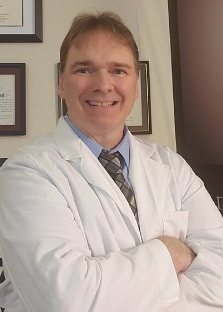 October 30th: MD Observations: From the Paranormal to the World of the Afterlife
October 30th: MD Observations: From the Paranormal to the World of the Afterlife
Donald Molnar MD
What might a practicing MD observe, while caring for folks at the end of their lives, and feeling like he is “standing on the threshold of this world and the afterlife”? For Donald Molnar, a practicing internal medicine hospital-based physician, it’s led to bringing his scientific viewpoint to investigations into the Near Death Experience, death-bed visions, and the transition at the moment of death. And having had his own paranormal experiences, he points out, has made him more open-minded about the existence of spirits and ghosts. He joined a ghost investigating team, conducts his own investigations, and uses technology to try to capture evidence of paranormal activity. He reports all this, as physician, scientist, and paranormal researcher, on Haunted MD on Youtube, and joins us to swap stories — for haven’t we all had inexplicable encounters?
 October 23th: DIVINATION: Divinatory Practices of Ancient India
October 23th: DIVINATION: Divinatory Practices of Ancient India
Frederick M. Smith – Professor Emeritus, Sanskrit and Classical Indian Religions University of Iowa
Divination has a sense of foretelling, predicting, or prophesying. It is an integral part of every shamanistic tradition and lineage from the most ancient times. It is vilified in the modern world as unscientific and superstitious, and associated with conjurers, illusionists, and popular magicians. But a renewed discussion of its history, its uses, and its importance in virtually all cultural, religious, and shamanistic systems, as well as its correspondence with recent thinking on synchronicity and perspectives on the harmony and flow of the natural world should enable us to think about it a bit differently. It is impossible to cover every divinatory practice in one talk, from astrology to tarot to dice to oracular possession to sorcery and prognostication of all kinds. I will discuss divinatory practices drawn from my own study of ancient Indian texts, including medical and texts on shamanic healing, and extensive fieldwork in India, which I hope will lead to a discussion of why apparently disparate parts of our available environment inform each other in ways that might be much more natural than supernatural. My point is that the shaman sees that forms, ideas, and entities flow into each other through the formless, that they are strands of the same cloth that mesh with each other because they are part of a whole and formless fabric.Fred’s vigorous research has included major forays into premodern North Indian devotional philosophy and poetry (of the Pustimarga of Vallabhacarya), deity and spirit possession in South Asia (on this see his important book, The Self Possessed [Columbia University Press, 2006]); Indian medical literature and the practice of Ayurveda, the great Sanskrit epic or Mahabharata, the history and practice of yoga, and continuing investigation into Vedic and other forms of Indian ritual performance.His training in India (where he lived for sixteen years) and at the University of Pennsylvania was text-critical, in the study of Sanskrit literature. His eye has always been diachronic, considering ritual, practice, or text over centuries or millennia. Example of this are his studies in the performance of Vedic ritual in modern times, which utilize several millennia of texts in addition to his own “Vedic fieldwork,” or in the textual history of deity or spirit possession, supplemented by both modern ethnographic writing and his own forays into the field.
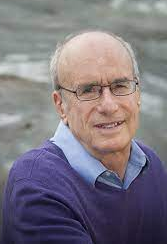 October 16th: Meaning Coincidences: How and Why Synchrony and Serendipity Happen
October 16th: Meaning Coincidences: How and Why Synchrony and Serendipity Happen
Bernie Beitman
We all note when those wonderfully odd, magical, meaningful moments of synchronicity and serendipity happen in our lives, but few of us have made as deep and broad a study of this phenomenon as Berry Beitman. With his new book just out, “Meaning Coincidences: How and Why Synchrony and Serendipity Happen” we look further into the energetic web that connects us, dissect the “anatomy of a coincidence” into its types and patterns, and predispositions. We will examine various explanations, from statistical analysis and probabilities, to personal agency, inbuilt “GPS” and the larger Universe giving us a nod. “Coincidences are signposts, not commands,” Bernie reminds us, “and there is no one right way to respond to a coincidence…, no guaranteed outcomes for following such promptings” and cautions that the ambiguity of such occurrences may be serving as a screen for one’s own projections. As well as Bernie’s most puzzling cases, practical uses, and tips writing and telling — and let me add, journaling — your own coincidence stories. Share yours during the second hour!
 October 9th: African Twilight: Vanishing Rituals & Ceremonies
October 9th: African Twilight: Vanishing Rituals & Ceremonies
Angela Fisher, Carol Beckwith with Kellie Kirksey
Two best friends set out to explore Africa. Forty years, 300,000 miles, and 45 countries later, their vast and visually stunning archive, on photo and film, of the daily life, the rituals and ceremonies of over 200 African cultures is helping preserve these ancient traditions. As women, Carol Beckwith and Angela Fisher were granted unprecedented access to witness and document sacred rites and ceremonies. They note: “We feel privileged to photograph these cultures that possess a wealth of knowledge that should be celebrated, shared, and honored. It is our life’s passion to document and create a powerful visual record of these vanishing ways of life for future generations.” We’ll hear the stories that go with the images in their slide show presentation.Paul and I attended their museum exhibit “African Twilight”, and among their many books of photography is African Ceremonies, their defining body of work, a double volume, pan-African study of rituals and rites of passage from birth to death, covering 93 ceremonies from 26 countries. This book won the United Nations Award for Excellence for “vision and understanding of the role of cultural traditions in the pursuit of world peace.”As an intrepid team of explorers, they are committed to preserving sacred tribal ceremonies and African cultural traditions all too vulnerable to the trends of modernity.They will be joined by African American academician Dr. Kellie Kirksey, an internationally renowned keynote speaker and holistic psychotherapist, who has trained mental health professionals in the areas of group facilitation, multiculturalism/diversity, social justice, holistic wellness, alternative healing, cognitive restructuring and more for over 25 years with, clarity, passion, authenticity and humor. Dr. Kirksey is the founder of Creative Wellness Solutions, LLC which seeks to cultivate global peace and harmony.
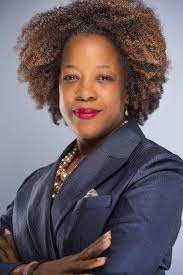 October 2nd: Multicultural Wellness: Cultivating Global Healing Together
October 2nd: Multicultural Wellness: Cultivating Global Healing TogetherDr. Kellie Kirksey, Founder of Creative Wellness Solutions
Every aspect of wellness not only affects all of our lives, but impacts the world around us. In our multicultural world the need for healing and deep connection is universal. Let’s work together as global thinkers to create a path forward for global peace and harmony. Dr. Kellie Kirksey focuses on bringing the healing ways from many cultures to the mainstream. She is a self-described global traveler, speaker, poet, tree hugger, yoga teacher, holistic psychotherapist, family lover, drummer, dancer, spa promoter, heart centered hypnotherapist, live happily life consultant, essential oil enthusiast, wellness promoter, and has presented workshops and wellness circles nationally and internationally. A few places that have touched her life profoundly have been presentations and community building in Botswana, Johannesburg, Italy, Senegal, Spain, Mexico, Dominican Republic, India, Canada, Venezuela, Tenerife and most recently to Hong Kong and Thailand exploring ecotherapy and moving meditation. Kellie is the author of “Word Medicine: Affirmations and Poems to inspire and support our Journey”
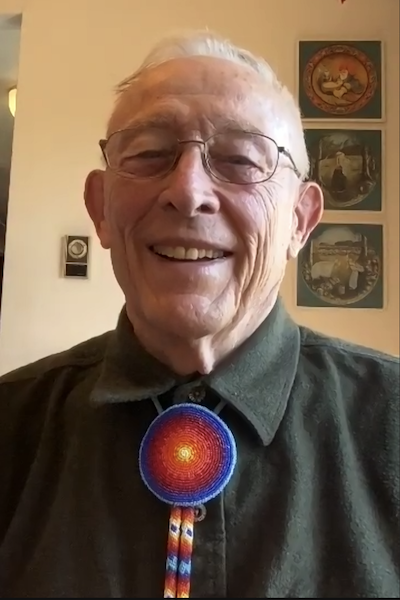 September 25th: Songs of Prophecy, Ceremony & Traditions
September 25th: Songs of Prophecy, Ceremony & TraditionsLoran Olsen, Professor Emeritus of Music & Native American Studies, Washington State University
Music serves a culture in various ways — as a container for cosmology, mythology, folklore, customs, celebrations, ceremonies, rituals, histories, prophecies, to accompany daily life’s activities and special events, and practical knowledge. Loran Olsen, musician and Professor Emeritus of Music and Native American Studies at Washington State University, shares a sampling from the Nez Perce Music Archive which he founded in the 1972. He draws from the collection of over 600 recordings, the oldest on wax cylinders from 1897. He will recite and translate the words and meaning, and put the collection into context for us. He will demonstrate how one song was sung, and changed, over the decades, how Protestant hymms were incorporated, how these songs were recorded from 1897 on, and how, he says, the collection “indicates in a subtle way the external influences impinging upon Nez Perce culture over the stressful years of acculturation and shows how artistic elements survive by changing their function in a changing environment.”
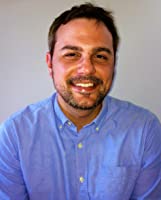 September 18th: New Perspectives on the Origins of Paranormal Experience
September 18th: New Perspectives on the Origins of Paranormal Experience
Brandon Massullo
What causes paranormal experiences? Are ghosts real? Why do certain people report numerous ghostly encounters and others none? For centuries these questions have intrigued, puzzled, and bedeviled science, skeptics, and even believers. Our guest will share new and exciting scientific theories that could explain apparitions, hauntings, and communications from the otherside. what is the role that emotions, bioenergetics, and the environment play in supernatural phenomena?Brandon Massullo is a licensed clinical therapist in Northeast Ohio. He has worked within the Neurological Institute for the world-renowned Cleveland Clinic, conducting behavioral health consultations. He is currently the director of behavioral health for Wooster Community Hospital in Ohio. He received his undergraduate degree in psychology, as well as his graduate degree in clinical counseling from the University of Toledo. He also has an MSc in psychological research methods (specialization in Parapsychology) from the University of Edinburgh in Scotland, UK. His research at the University of Edinburgh centered on individual differences and environmental sensitivity in relation to paranormal experiences.

September 11th: Unlocking the Universe’s Secrets: James Webb Space Telescope
Tony Hull, Diana Dragomir, Bob Woodruff
They are back, to help us welcome the incoming images and data from this new, and successfully deployed JWST telescope! We are all “stakeholders” in the ongoing quest for new information, for ‘widening our bandwidth” and the implications it has for an emerging new story of not just our Universe, but ourselves, and our place in it. And while we all marvel at the stunning new images from Deep Space, the data for the fields of astronomy, astrophysics, and astrobiology will grow exponentially. What will this reveal? What new questions and insight will emerge from the long-range, detailed views of the Cosmos? How might this affect our concept of home, and a new identity as citizens of the cosmos? The James Webb Space Telescope is an ambitious scientific endeavor to answer these questions. Webb builds on the legacy of previous space-based telescopes to push the boundaries of human knowledge even further, to the formation of the first galaxies and the horizons of other worlds.
Diana Dragomir, Professor of Astrobiology at the University of New Mexico, will conduct studies of planets outside our solar system, with data from the JWST. What kind of data? What will it mean, adding to the long study and search for exo-planets? What fundamental questions about life and the formation of the universe, and what entirely new questions are anticipated?
Bob “Woody” Woodruff, optical designer finding the correction saving Hubble from its early severe issues and
![]()
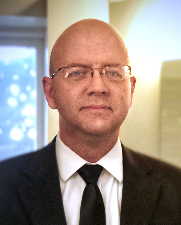 September 4th: Sky Watch: Dark-Sky Conservation
September 4th: Sky Watch: Dark-Sky Conservation
John C. Barentine, Ph.D., F.R.A.S. Astronomer
![]()
 August 28th: Ecozoic Era: Time for New Story for Humanity
August 28th: Ecozoic Era: Time for New Story for Humanity
Herman Greene, Founder of the Center for Ecozoic Studies
Twenty years ago Herman’s life path was altered by an inspirational meeting with Thomas Berry, Catholic Priest, cultural and religious historian, with a new call to action: Help usher in a new story for humanity, new identity as a vital part of a larger, interdependent Earth community, and enter an emerging new evolutionary phase. Tall order! And here we are at the critical junction foreseen. Can we enter an “Ecozoic Era“, one of mutually-enhancing Human-Earth relations, or are we to remain in Techozoic Era, and continue to exploit one another, and our planet and her resources with our technological mastery. Or can we undergo the transformation needed, whereby we might use technology to right our course for a future we all want to see?
![]()
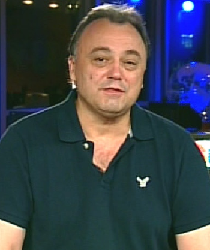 August 21st: Artificial intelligence & Robotics and the Future Health Care
August 21st: Artificial intelligence & Robotics and the Future Health Care
Michael Kapoustin, AI Entrepreneur
AI powered robots are set to perform tasks and operations we humans find too complex, repetitive, boring, or dangerous. It may seem fictitious, but robots are set to change humanity. AI robots can withstand environments of extreme noise, heat or cold, or toxic or poisonous. AI robots could save countless lives while freeing overworked doctors and nurses to give more time and attention to patients. Will these and other benefits usher in widespread acceptance of robots?
Michael Kapoustin holds two AI patents and founded the technology startup ujatcare.com develop and advance the adoption of artificial intelligence and robotics to help health providers and families provide compassionate and accessible home health and end of life care. He is starting the non-profit Goditsme.com as a repository of the stories those facing the end of their life journey want to share, to be heard, to give of their hard-won wisdom, and not to be forgotten, and using holistic technologies for answering the question of life.
![]()
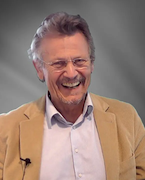 August 14th: Waking to Dreaming: Neurological Journey
August 14th: Waking to Dreaming: Neurological Journey
Geert Mayer, Neurologist, Psychologist, Former Director in Hephata Klinik, Germany
Geert, an advisor to the Cuyamungue Institute, describes our work as “the hybrid state of a waking dream” and will share his personal experiences with us, and with lucid dreaming. What is the relationship of sleep states altered states of consciousness? What portals might sleep and dreaming open? What is our still highly active brains do, during sleep? during dreaming? How can we set ourselves up for better sleep, for the full dose of “medicine” it is?
What health risks do we face from inadequate sleep?![]()
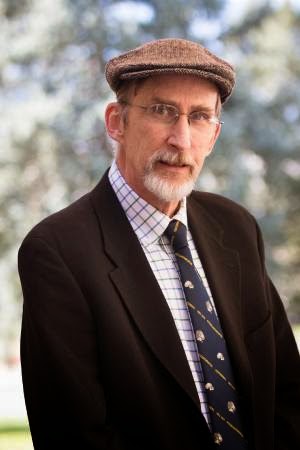 July 31st: First Sculpture: What Our Earliest Tools & Art Reveal
July 31st: First Sculpture: What Our Earliest Tools & Art Reveal
Thomas Wynn, Distinguished Professor of Anthropology, University of Colorado, Colorado Springs
Our earliest hominid ancestors, were, like us, hard-wired for pattern recognition, and like us, prized faces and figures in natural stones. It came naturally while knapping stone tools, to frame and showcase the material’s special features, to employ symmetry and aesthetic choices. With that, utilitarian objects became art. Thomas Wynn shares images of rare handaxes, stone spheres, and ‘figure stones’ that were sculpted by Homo Erectus and Neanderthal flint knappers, revealing how evolution’s hand has shaped us, laying the foundation of culture, language, and symbolic imagination. The sense of beauty and order is a biological and neurological imperative, built into our very DNA.
![]()
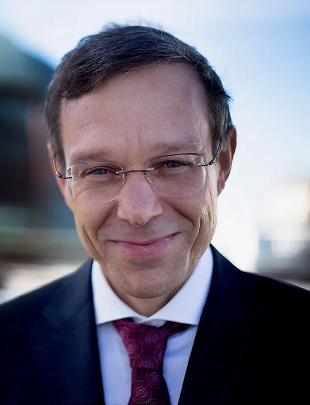 July 24th: ET: Out of the Fringe and into the Mainstream
July 24th: ET: Out of the Fringe and into the Mainstream
Avi Loeb, Theoretical Physicist and Department of Astronomy, Harvard University
Founder of the privately funded Galileo Project, Avi takes the search for E.T. out of the fringe and into serious discussion. Recently, our government agreed with the release of reports on aerial phenomenon that cannot be conventionally explained. What evidence for visitation by extra-terrestrials, past or present, passes his tests? How does his sift through the data, and what data is he looking at? What does the Galileo Project hope to find, and what changes when it does?
![]()
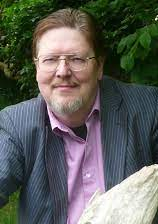 July 17th: The Lost Tales of The Arthurian Sagas
July 17th: The Lost Tales of The Arthurian Sagas
John Matthews, Celtic Wisdom Tradition Historian
The tales of King Arthur are due for an update, and John Matthews searched far and wide for the missing chapters which he includes in his newly released The Great Book of King Arthur and His Knights. This includes 32 stories from France, Germany, Italy, Ireland, Iceland and Norway with a mix romance, adventure, action, and the magical and mystical. These were omitted from Sir Thomas Malory’s Le Morte D’Arthur, the definitive collection of Arthurian stories first published in 1485. What detective work went into recovering these lost tales? Where were they sourced, and what do they add to the legacy? Why does this saga still speak to us so deeply? John will read excerpts from two of his favorite stories. He is a world-renowned author on the Celtic wisdom tradition and the Arthurian legends. His numerous books include The Encyclopedia of Celtic Wisdom.
July 10th: MASKED DANCERS: A Cross Cultural Tradition
Christine VanPool & Todd VanPool. Professors of Anthropology, University of Missouri
![]()
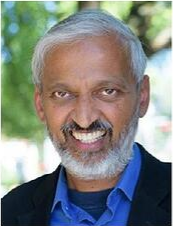 July 3rd: The Great Healing: Ourselves and Our Planet
July 3rd: The Great Healing: Ourselves and Our Planet
Dr. Sailesh Rao
![]()
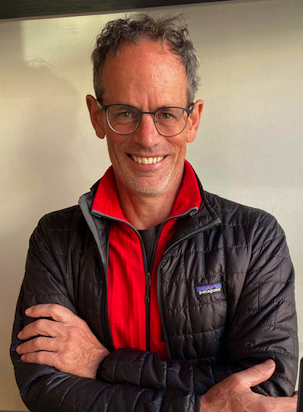 June 26th: POSTURES: Finding the Cross Correlations
June 26th: POSTURES: Finding the Cross Correlations
Between Yoga Postures & Ecstatic Trance Postures
Eric John Shaw
 June 19th: Gnomons Tracing the Solstice & Equinox through History
June 19th: Gnomons Tracing the Solstice & Equinox through History
Tony Hull, Adjunct Professor of Physics & Astronomy at UNM
Prepare to celebrate the Solstice with us, with a history of The Gnomon, a simple yet profound tool to track the sun’s journey across the sky on the Solstice and Equinox, that points to the celestial cardinal directions. This simple yet profound tool reveals the cardinal directions, and can explain how ancient sites are so accurately aligned, long before the magnetic compass. The solar and lunar cycles, so meaningful to the astronomers of old, were writ upon the landscape in myriad ways, and we can continue this long tradition in new ways today, for ourselves, to deepen the relation we have to the larger sphere of the cosmos.We are redefining our place in the universe, with the new tools of technology. It’s time we also realigned our personal relationship — and reclaim this enriching, and inspiring one that ancient cultures the world over had.
Tony gives us a tutorial on establishing our own marker system, our backyard or even a wall of the house to get sun, to chart the workings of the calendrical clock in gears and wheels our solar system, and will see how ancient cultures the world over use this very method to talk to send journey through the year and how to use the simplest tools to line buildings and temples to celestial cardinal directions
The Superheroes of Today and the Mythic Heroes of Old
Douglas Wolk, author of “All the Marvels”
Douglas Wolk and his son read all 27,000 Marvel comic books, what is in effect, the largest/longest running and expanding mythic saga of our times. It’s also a handy means to reflect on today’s Superheroes and compare them to the mythic heroes of old. How does a single story, within a coherent ‘universe’, evolve through multiple characters and contributors? What are the whys and wherefores of the ‘rule set’ of this universe, what are the qualities and challenges common to heroes, their mission, super powers, fears and foibles, and what does this reflect about us? how does their popularity speak to what is emerging in the culture, about the hero journey we are all undertaking?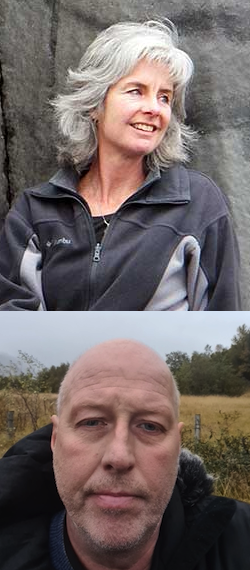
Icelandic Healer & Seers
Corinne Dempsey, Assoc Professor of Religious Studies, Nazareth College, &
Joi Sigurdsson, Icelandic Healer
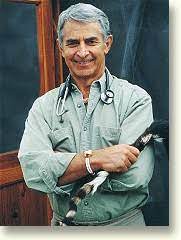 Western MD & Indigenous Healing
Western MD & Indigenous Healing
David Cumes, MD
It was his work with San Bushmen in his native South Africa that expanded this western-trained medical doctor’s perspective on what healing is. David Cumes reclaimed the healing professions early, traditional roots when he attended the San’s healing dances, was initiated by the Zulua as a Sangoma Shaman and, as wilderness guide, led healing journeys through Peru, Africa, and the Sinai. What healing energy flows through the dancer? What can “throwing the bones” tell the diviner for his diagnosis? What role does ritual play in activating the life force? “In bridging these two worlds for healing,” he says, “we expand our ability to embrace a changing world.” May 22nd: Near-Death: Consciousness Beyond Life
May 22nd: Near-Death: Consciousness Beyond Life
Kimberly Clark Sharp MSW, LCSW
Kimberly Clark Sharp continues the conversation on the Near Death Experience with more stories among the thousands she has heard from her thirty-plus years counseling. Near-death experiences (NDEs) are profound transcendental experiences commonly occurring in life-threatening conditions. They include feeling a sense of peace, of seeing a bright light, encountering deceased relatives or religious figures, and of transcending space and time.“Death is nothing to fear-and life without fear can be lived to the fullest. This is Kimberly Clark Sharp’s message from her extraordinary experience during the time after her heart suddenly stopped beating and she lay on the sidewalk, not breathing, and without a pulse. Founder of Seattle International Association of Near-Death Studies, the world’s oldest support group for near-death experiencers, since 1982”
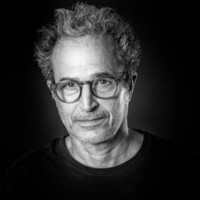 May 15th: Indigenous Theatre
May 15th: Indigenous TheatreIntegration of Arts, Culture and Ritual
Guest: Thomas Riccio, Professor of Visual & Performing Arts, University of Texas, Dallas

Joel Primack & Nancy Abrams
Joel Primack & Nancy Abrams’s illustrated tour through the Cosmos highlights how we humans enjoy the very rare gift of being aware of not only our own evolutionary history, but that of the Universe, and how precious we, all of life, and our home planet are in the grand scheme of things. Along with a new story of the Universe, its inspiring to see a new role for humanity. What gifts, what responsibilities, what opportunities, what future does this evidence-based, long-range knowledge afford us? Here is the basis Joel Primack is emeritus professor of physics at the University of California. Nancy Abrams is a writer and lawyer with a background in the history, philosophy, and politics of science.
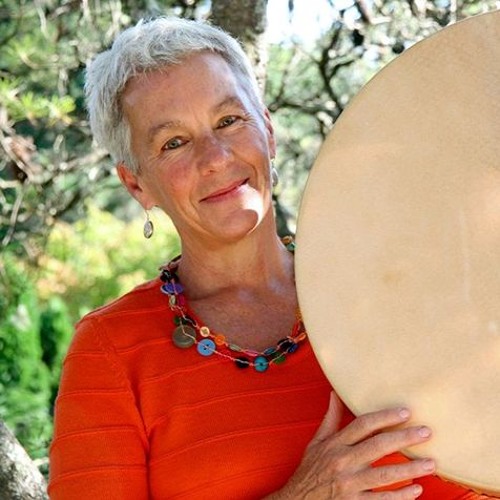 May 1st: Frame Drums: The Feminine History of Rhythm & Rituals
May 1st: Frame Drums: The Feminine History of Rhythm & Rituals
Jane Elworthy
The frame drum is among our most ancient musical instruments and one of the first percussive instrument invented, and used widely, for prayer, ritual, ceremony, personal wellness and healing, beyond music. Many consider it far more than a musical instrument — a living spirit that calls us back to our origins and relationship to Creation.
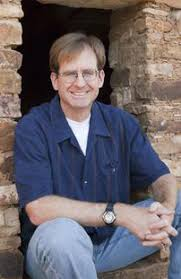 April 24th: Ancestral Village of Cuyamungue: Revealing Archaeological, Historical and Traditional Knowledge
April 24th: Ancestral Village of Cuyamungue: Revealing Archaeological, Historical and Traditional Knowledge
Scott Ortman – Associate Professor of Anthropology at the University of Colorado Boulder
The Cuyamungue Institute hosted a collaborative project of the ancestral Tewa site on CI’s land, with our neighbor, the Pueblo of Pojoaque, and the project lead, Scott Ortman, who brought in teams from the University of Colorado-Boulder. Scott presents his illustrated talk, Cuyamungue as a Center Place, to turn back the clock on the once thriving village known as K’uuyemugeh (the traditional spelling, translated as ‘place where the rocks slip’ or ‘stones falling down place’) The project’s goals: “increase awareness of local ancestral sites in contemporary Pueblo communities, to strengthen local community identities, and to integrate archaeological, historical and traditional knowledge in telling the story of the land of the Cuyamungue Institute,” says Scott. His work focuses on the contemporary relevance of archaeological research, historical anthropology, and integrating theory and data from many fields to better understand the long-term histories of indigenous peoples. From Tewa Pueblo origins in the Northern Rio Grande region of New Mexico, to the growth and collapse of villages in the Mesa Verde region of Colorado, he is especially interested in the causes and consequences of major transitions – periods when new societies formed, old ones collapsed, or new scales of organization emerged. What insights from the past can we apply to our present and future, as, on a global scale, we reach unprecedented rates of growth, change, and complexity?Scott Ortman holds many posts: Associate Professor of Anthropology at the University of Colorado Boulder, Research Affiliate of the Crow Canyon Archaeological Center, External Professor at the Santa Fe Institute, Associate Editor for Anthropology and Archaeology with Science Advances, Faculty Affiliate with CU Population Center, and Director of the Center for Collaborative Synthesis in Archaeology within the Institute of Behavioral Science, University of Colorado Boulder. He is author or co-author of numerous papers on Pueblo Indian historical anthropology, archaeological demography, and complex systems approaches in archaeology. His books include Winds from the North: Tewa Origins and Painted Reflections: Isomeric Design in Ancestral Pueblo Pottery.




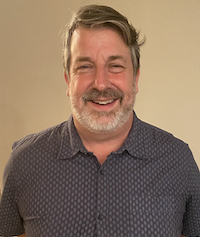 July 14th:
July 14th: 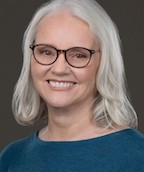 May 26th:
May 26th: 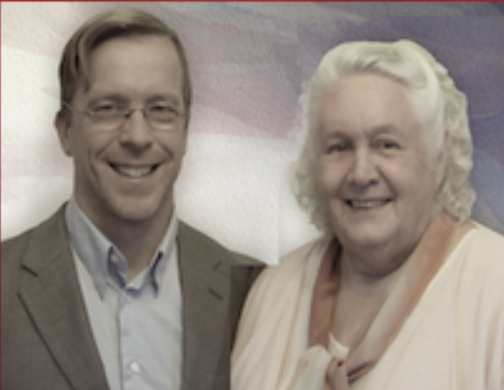 May 26th:
May 26th: 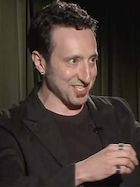 June 4th:
June 4th: 